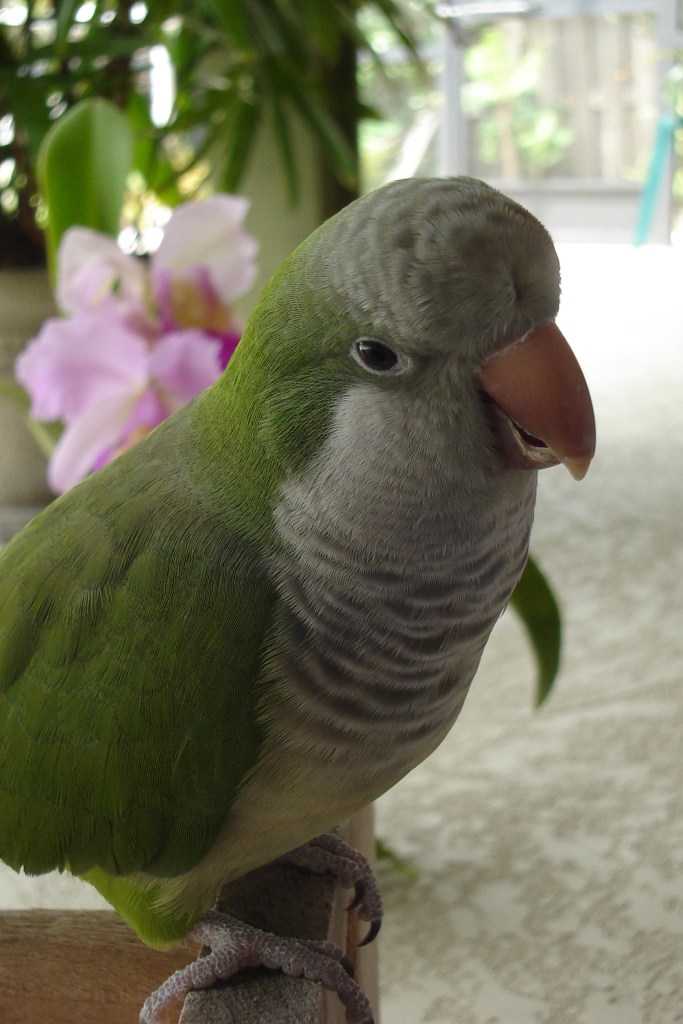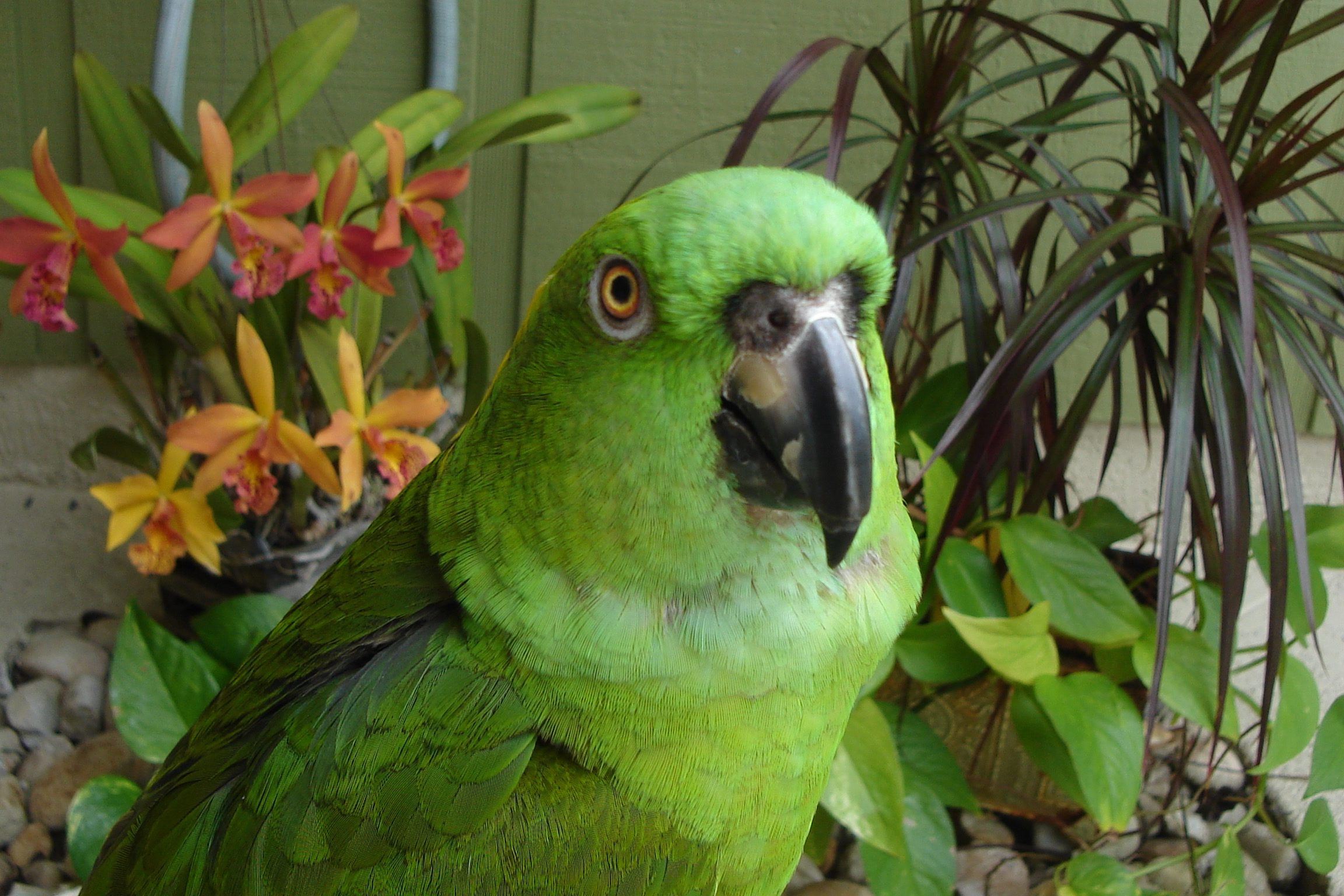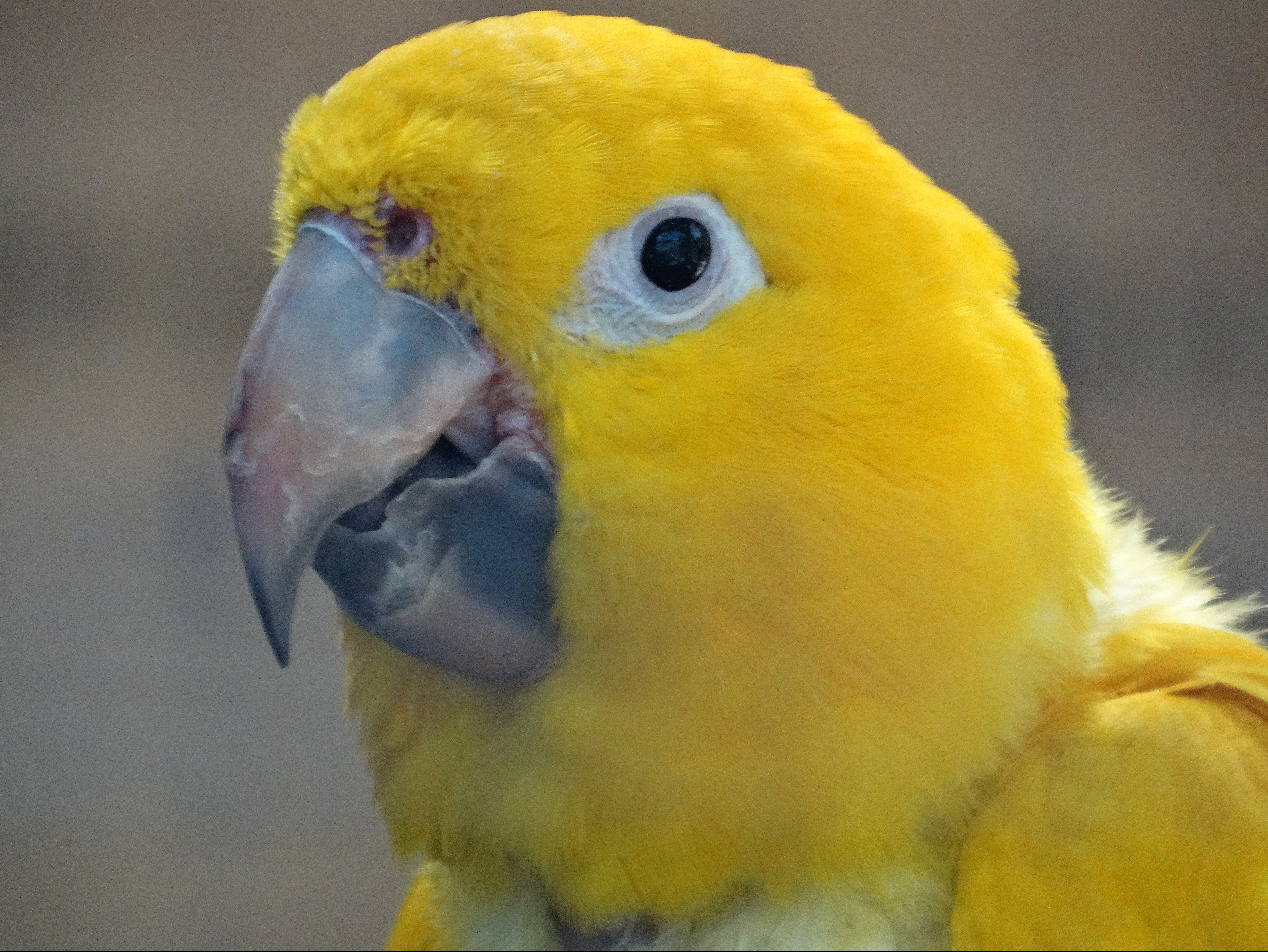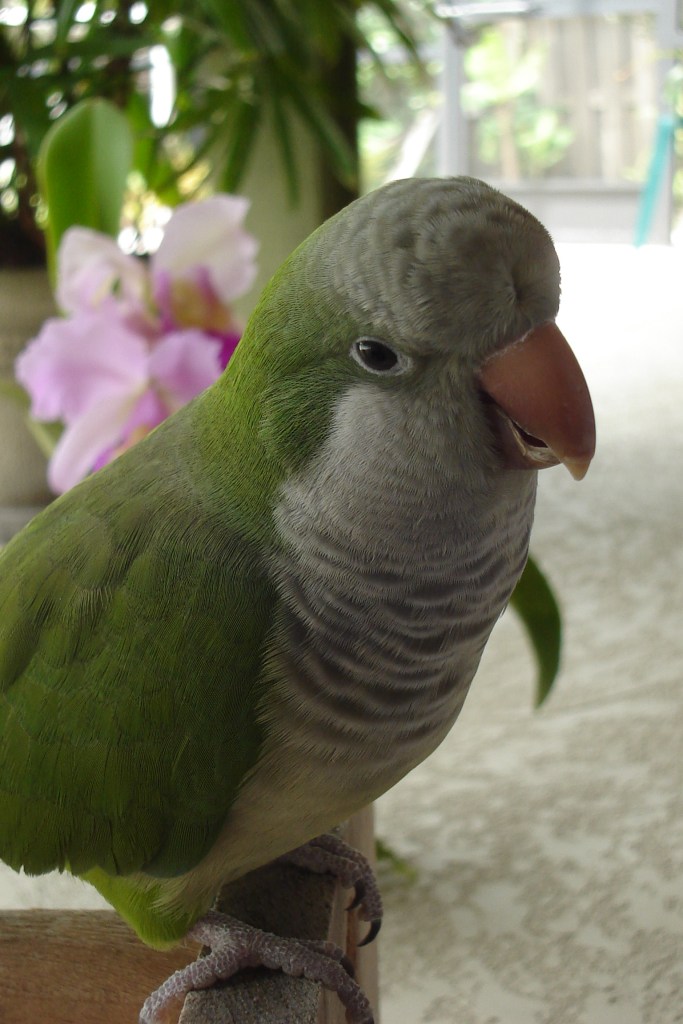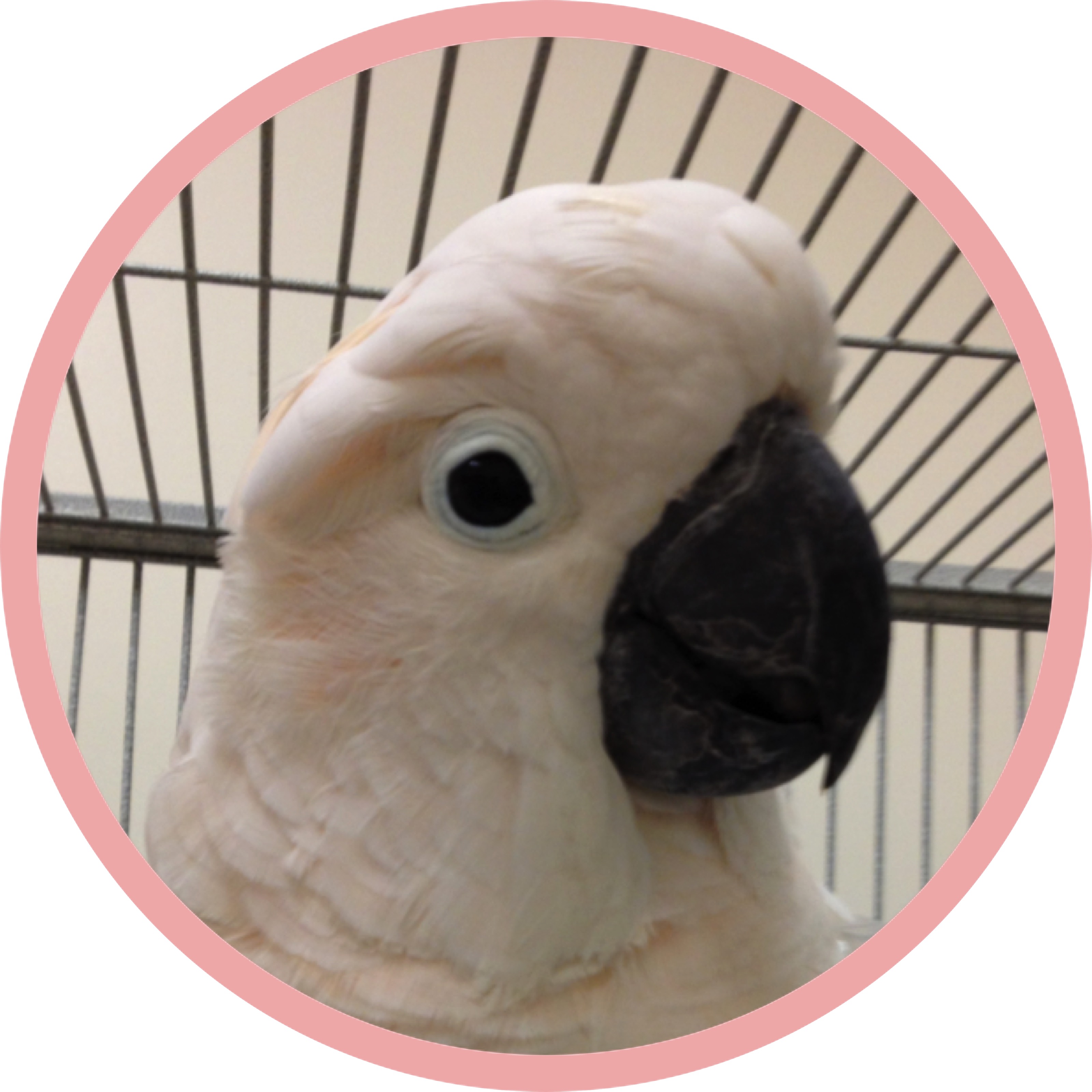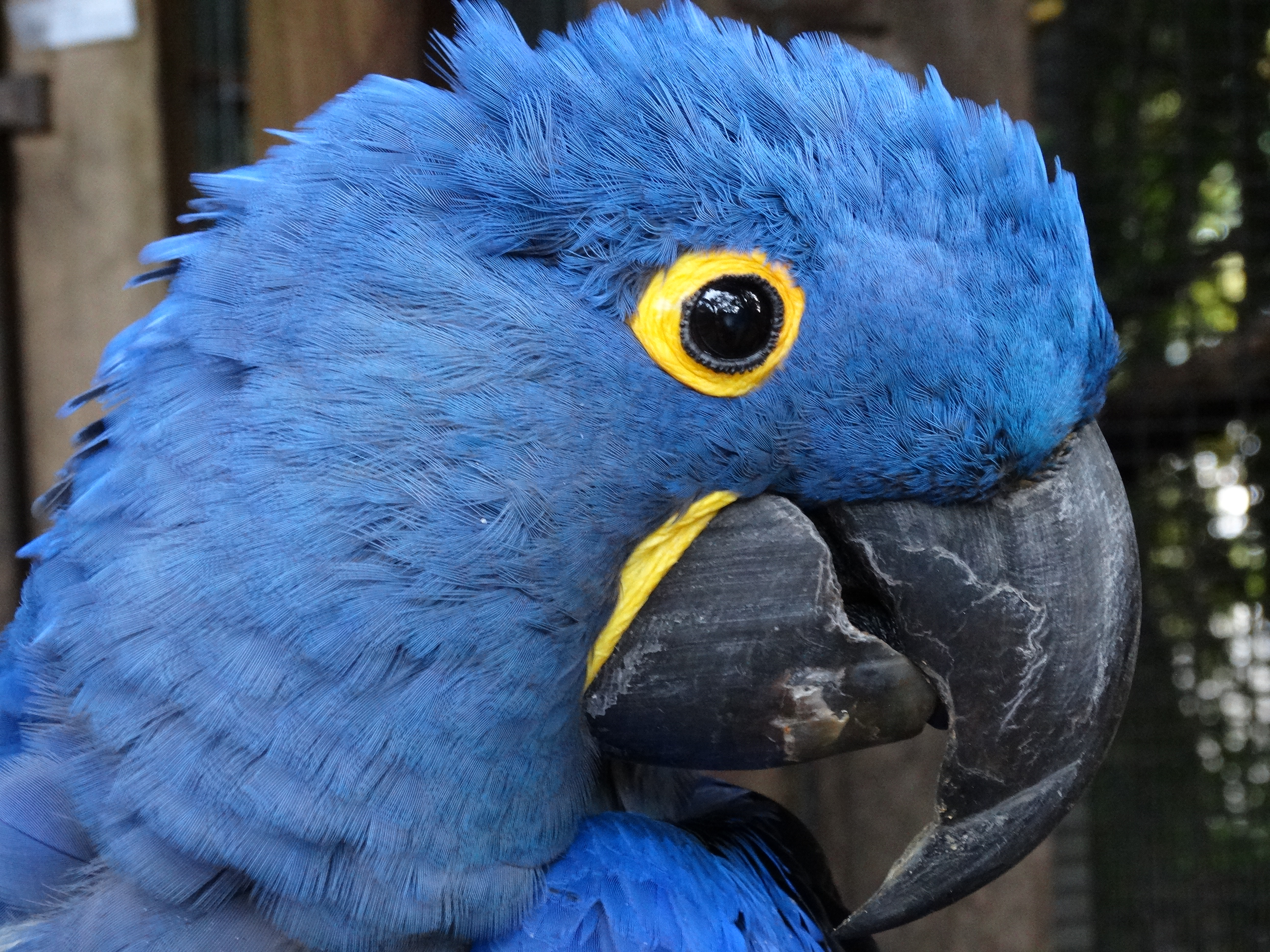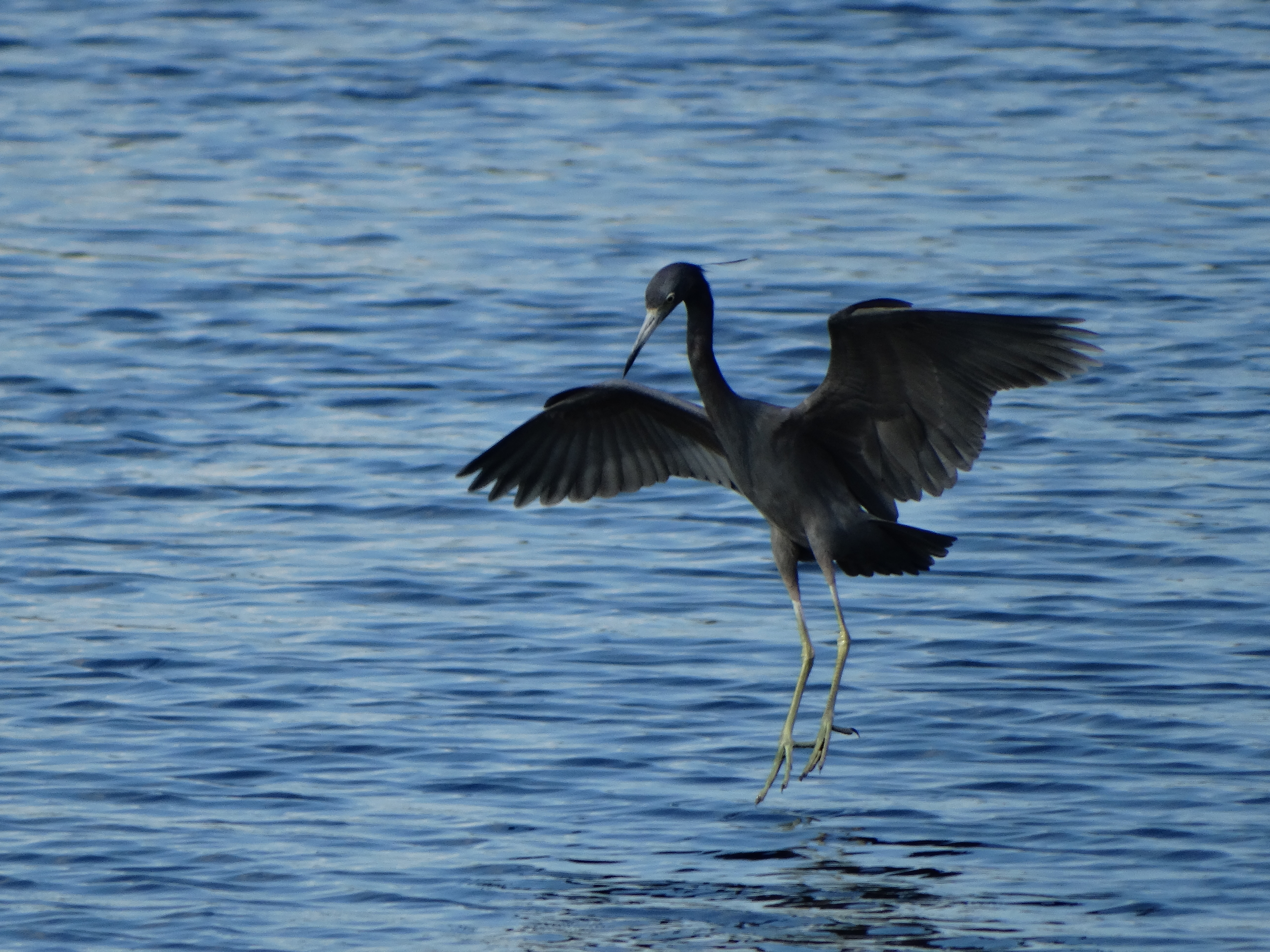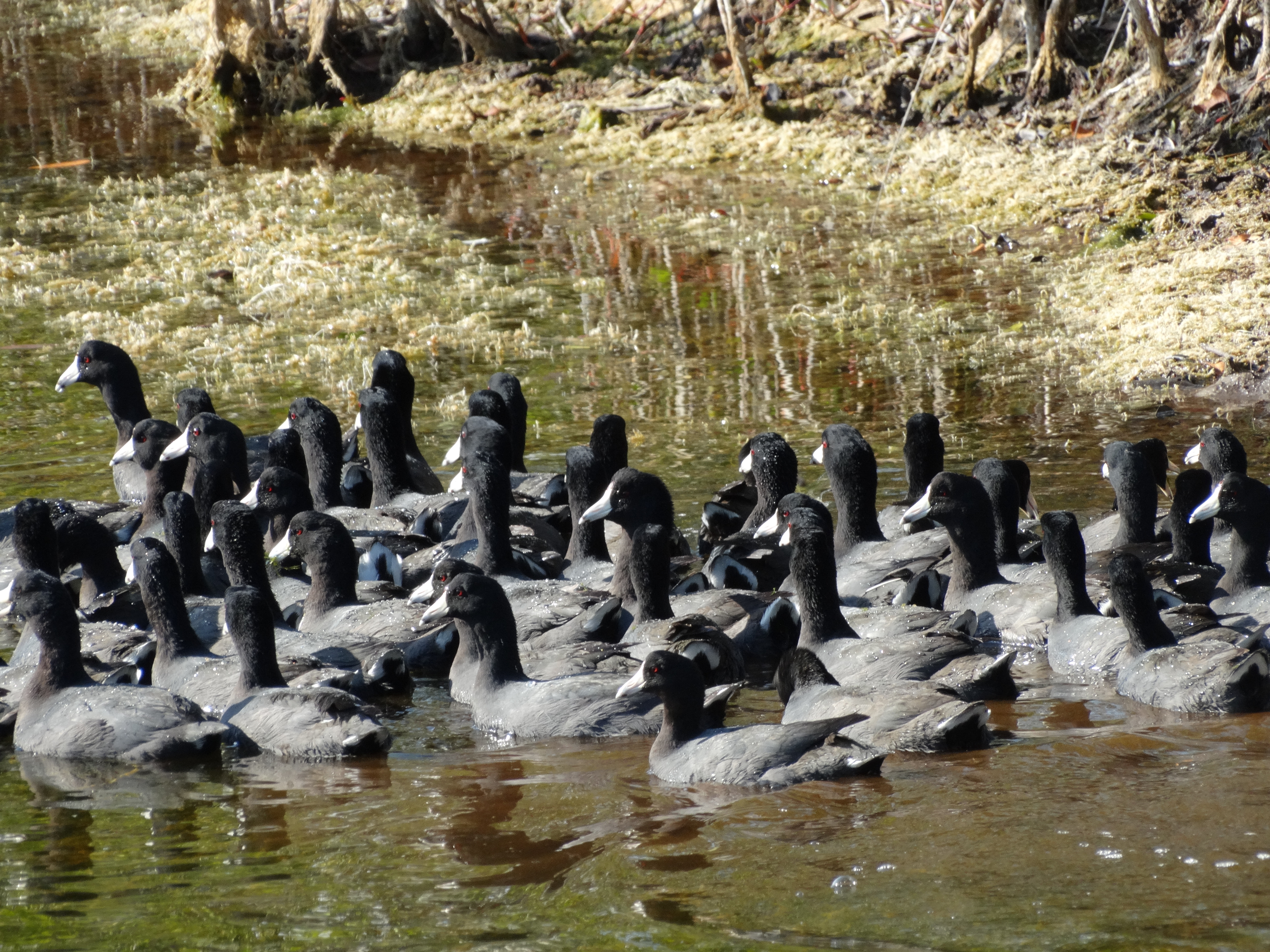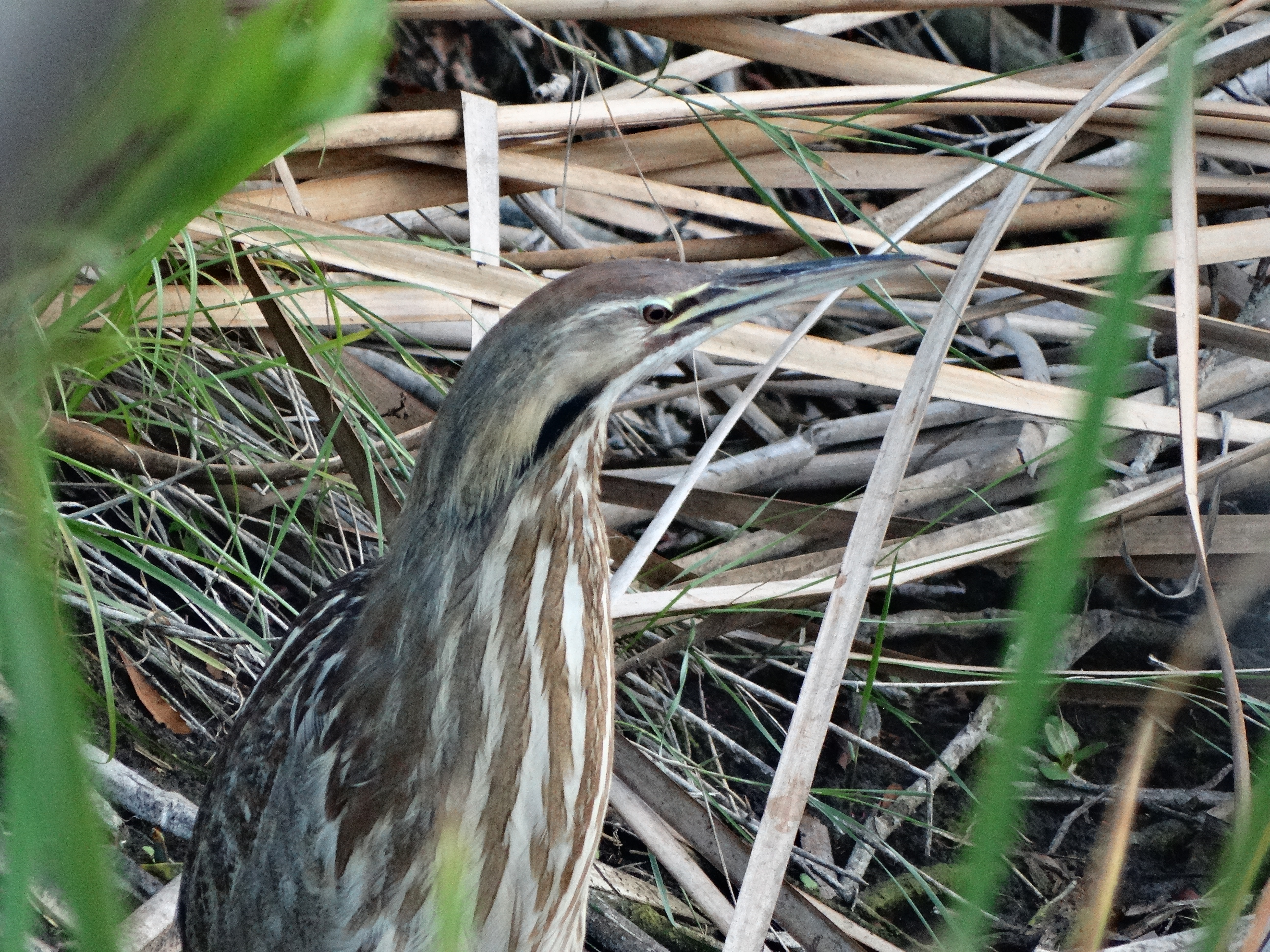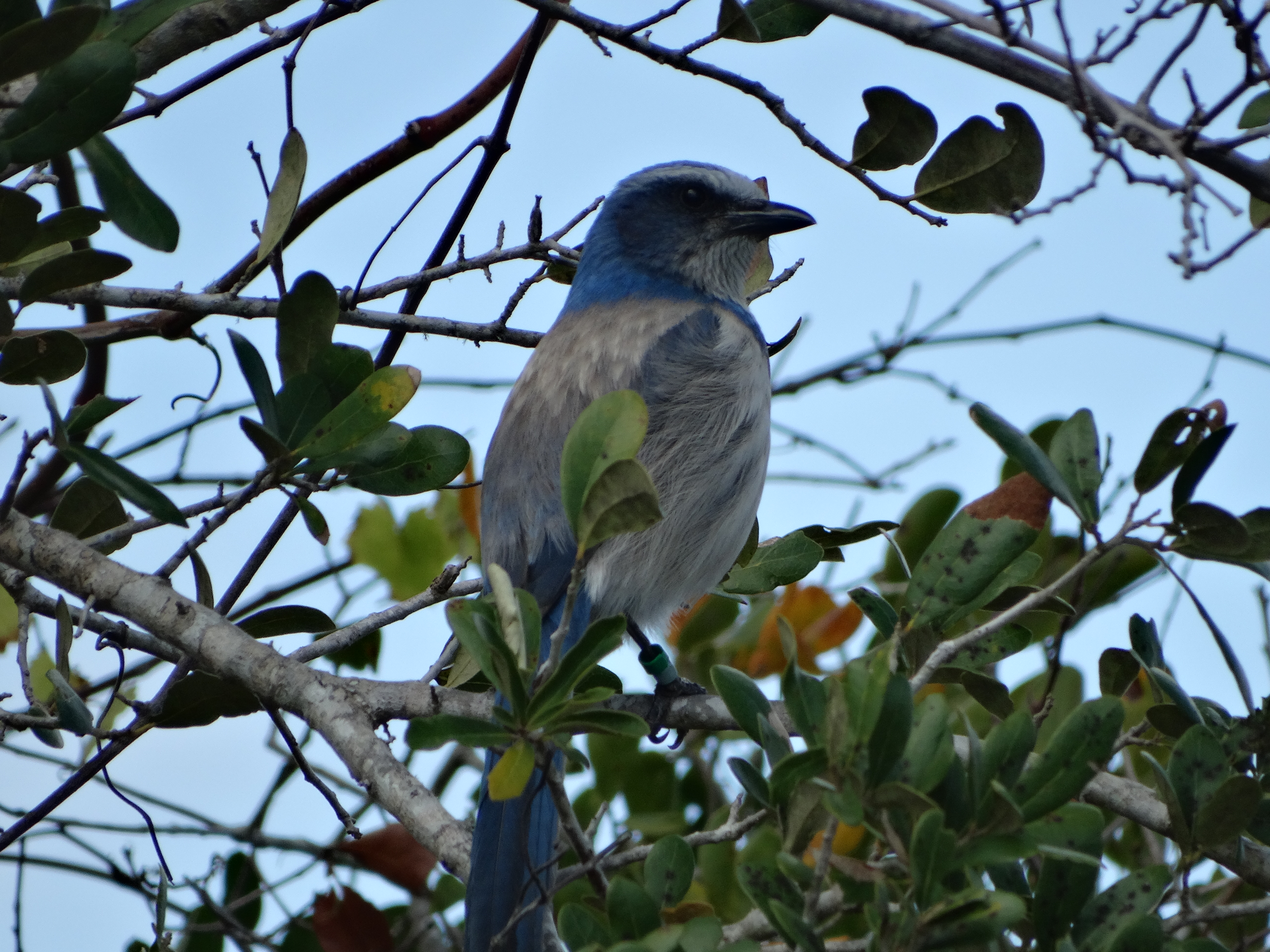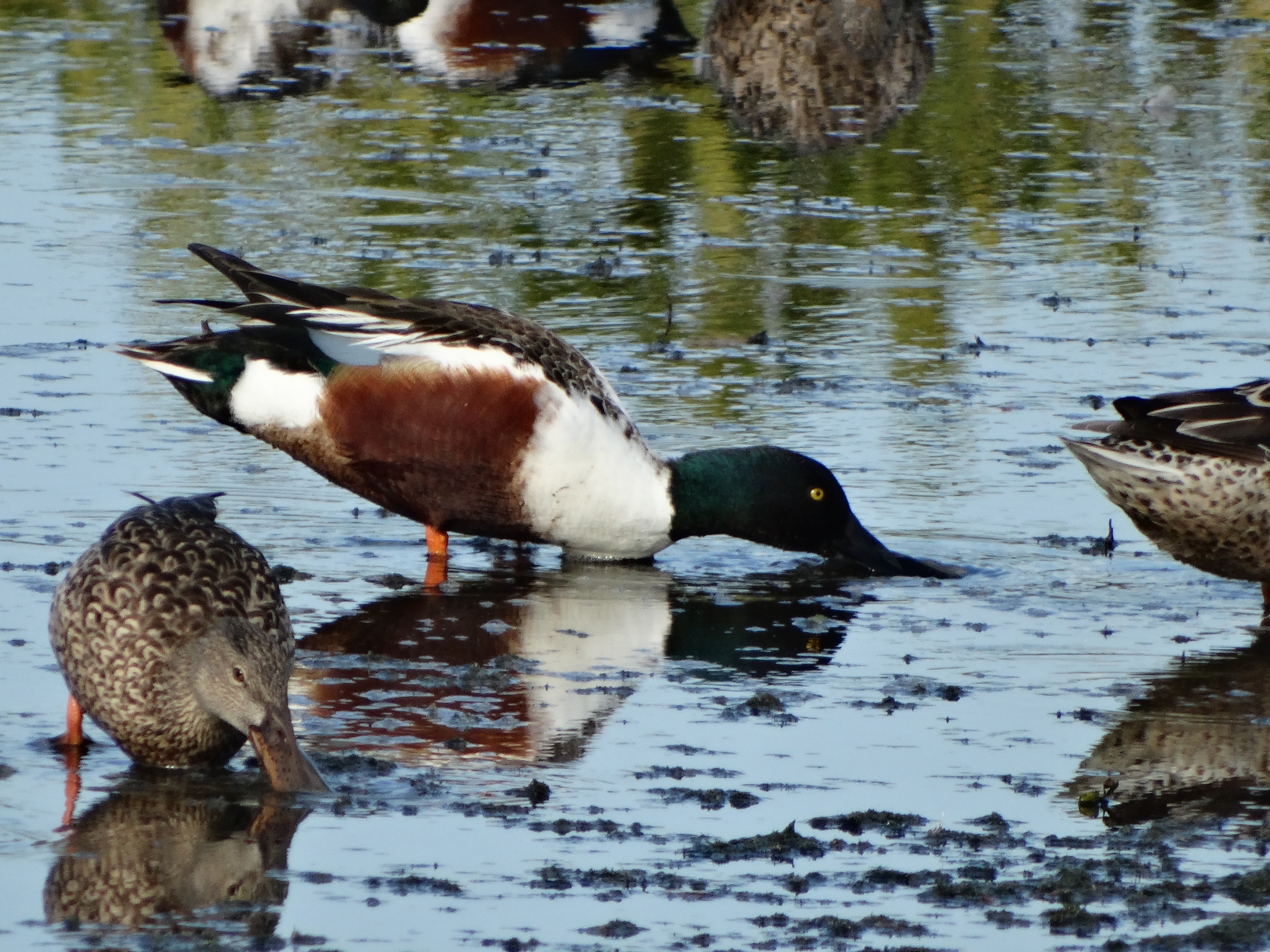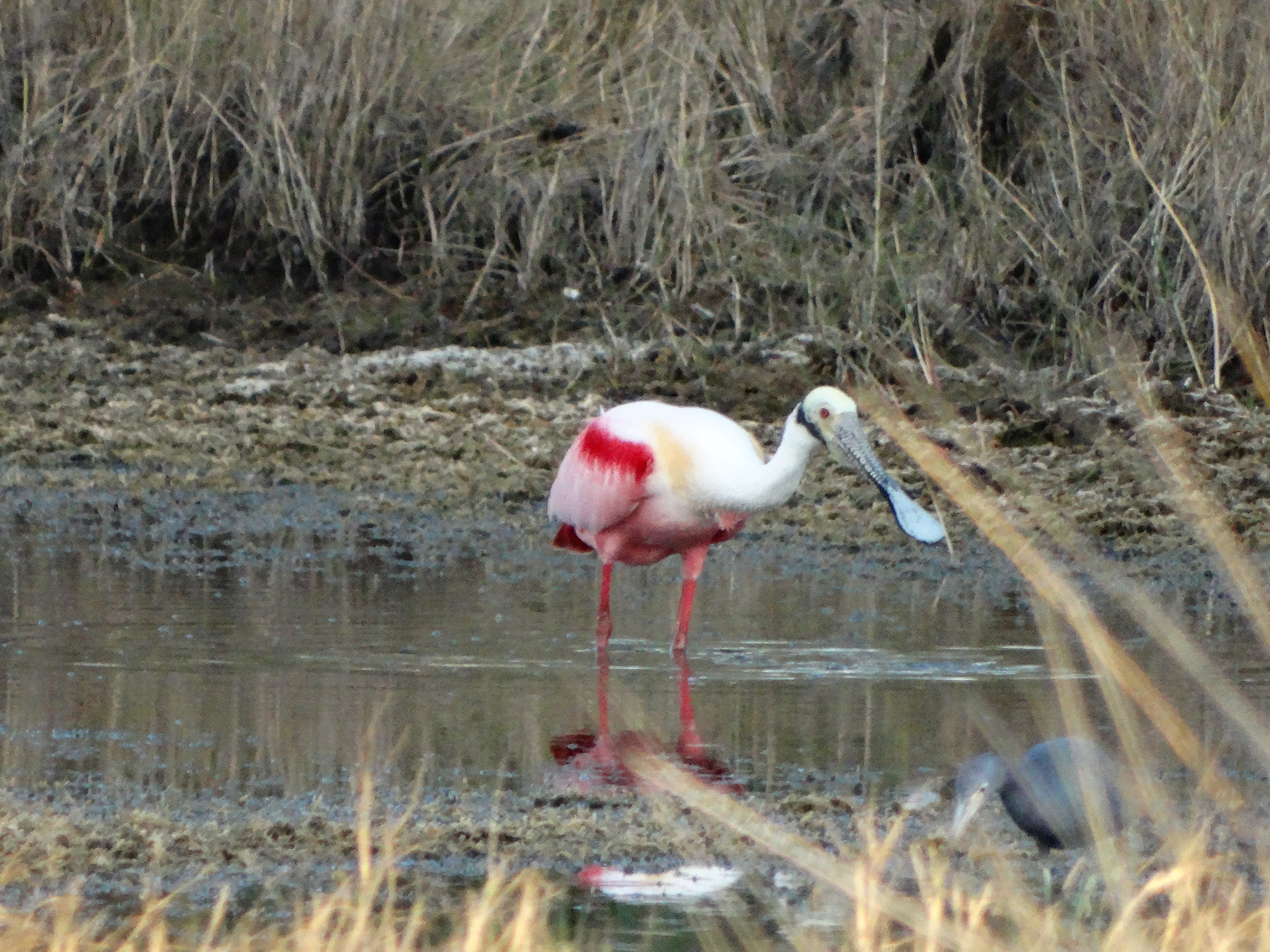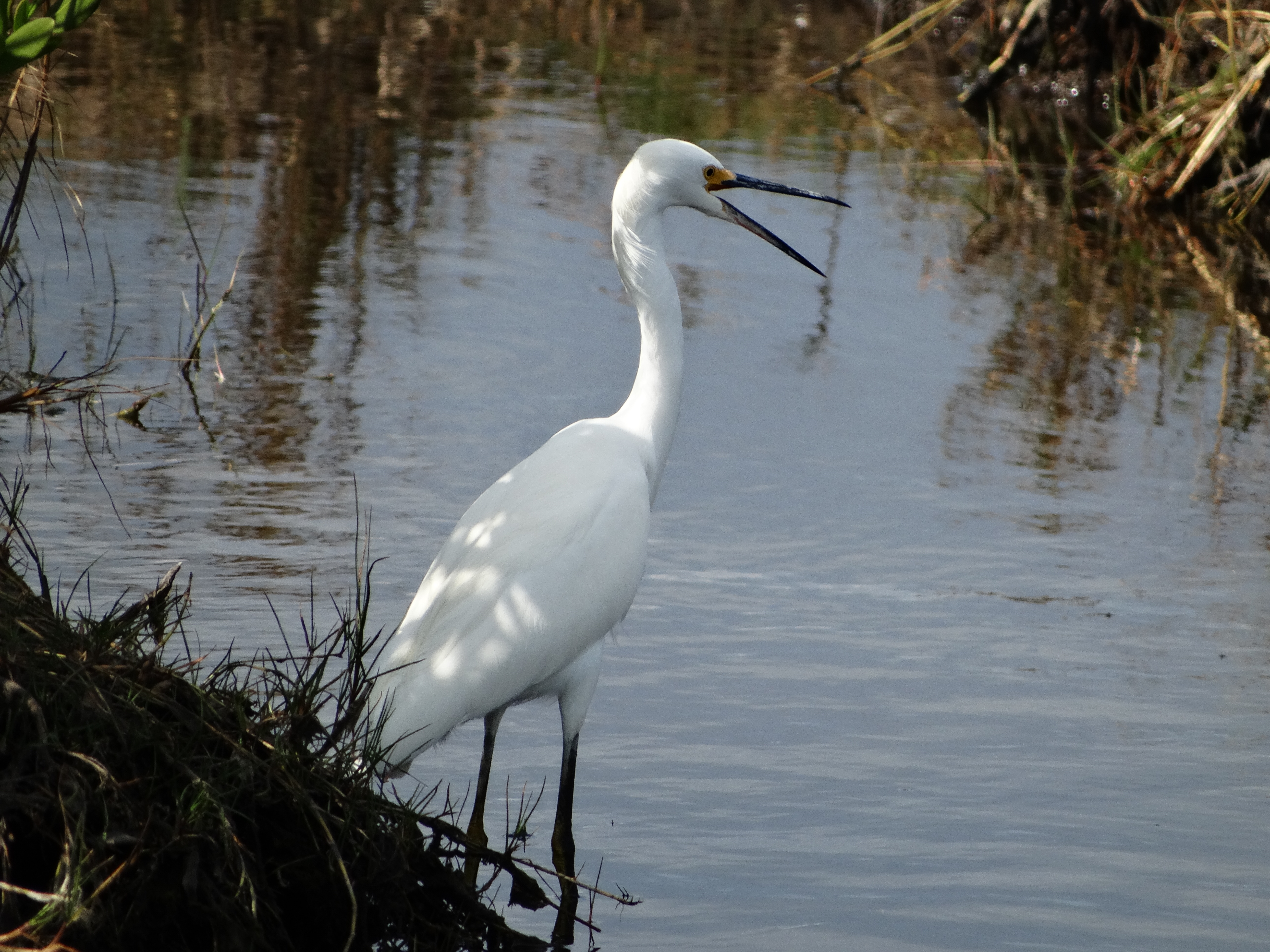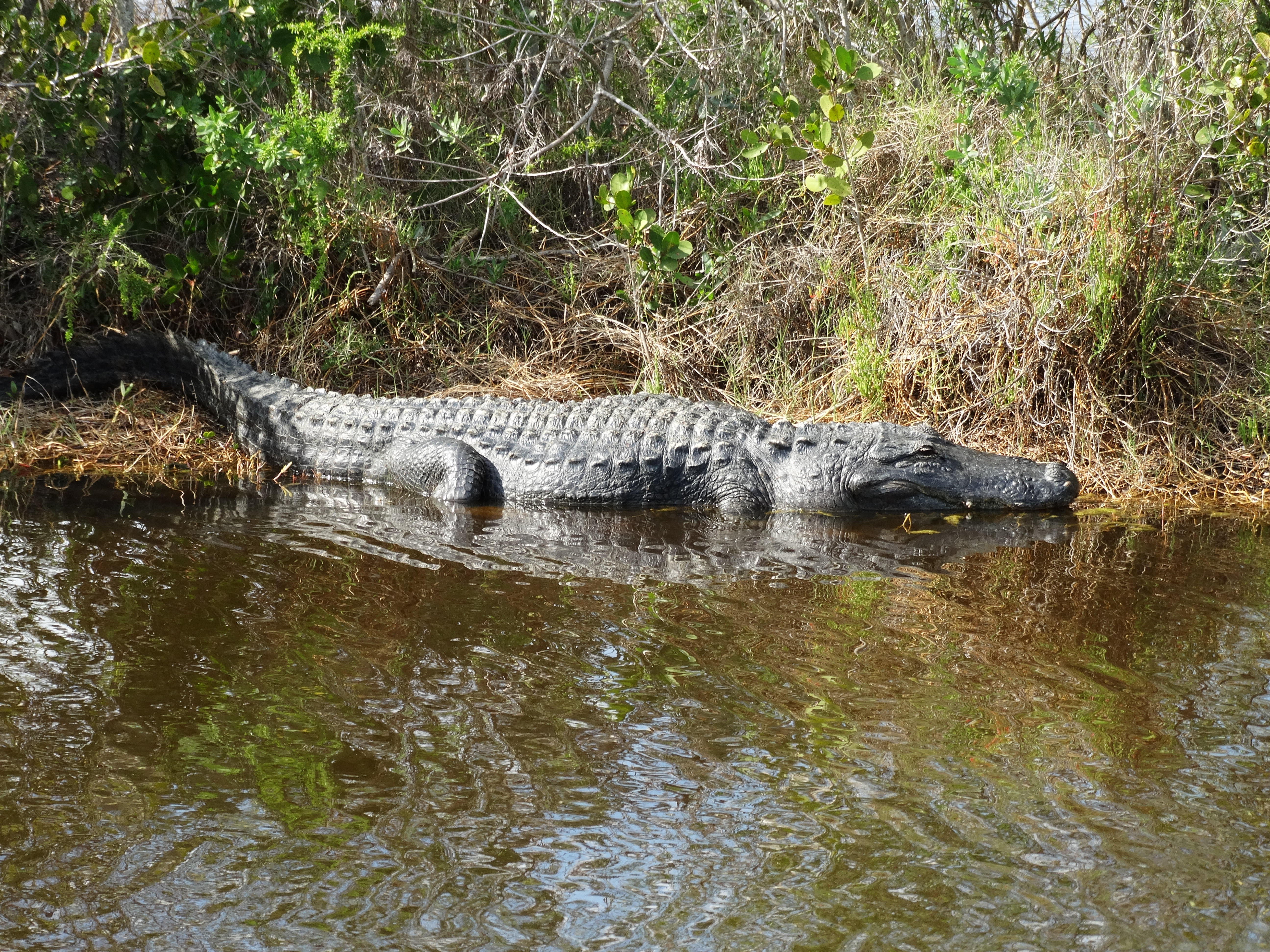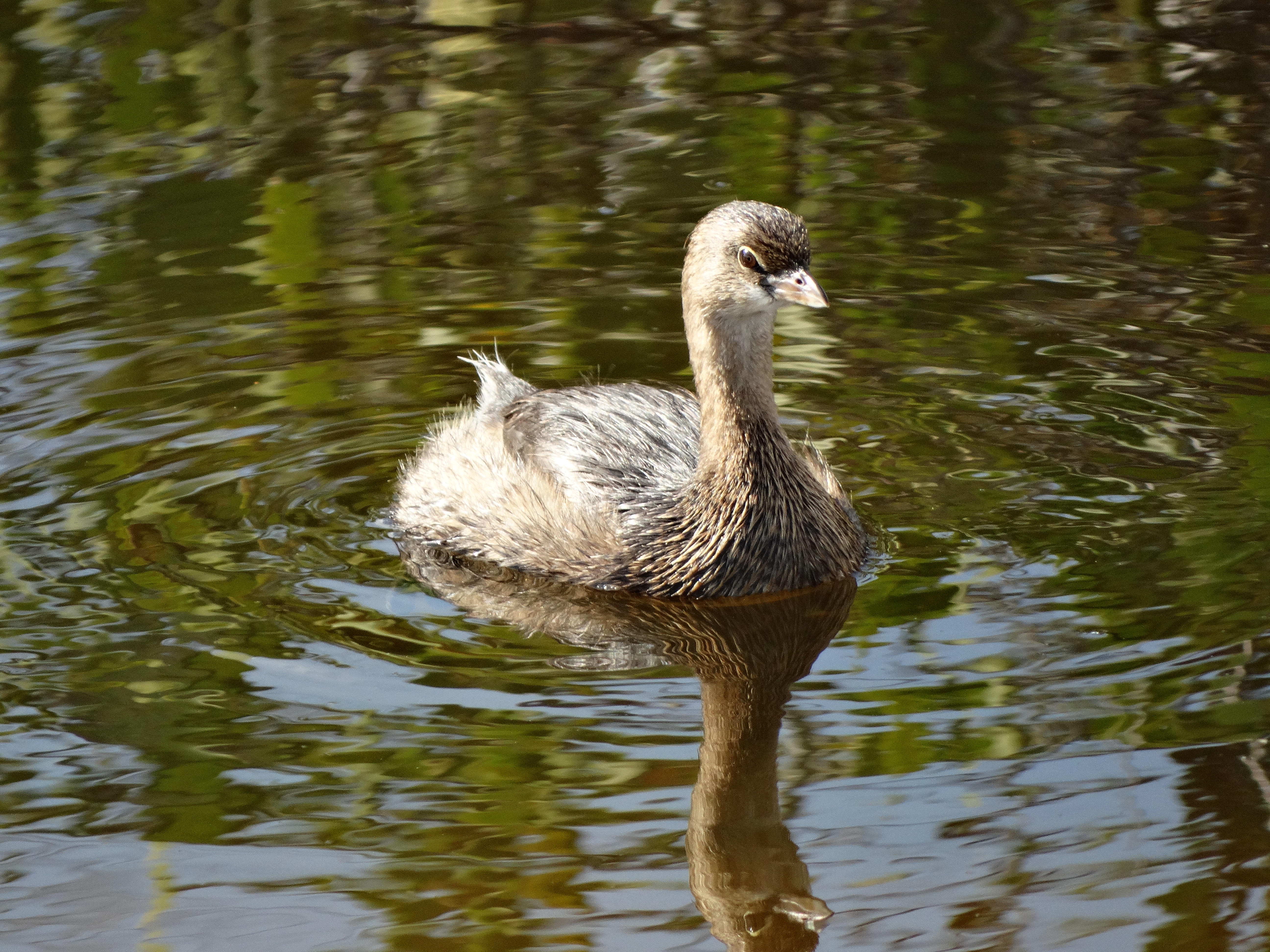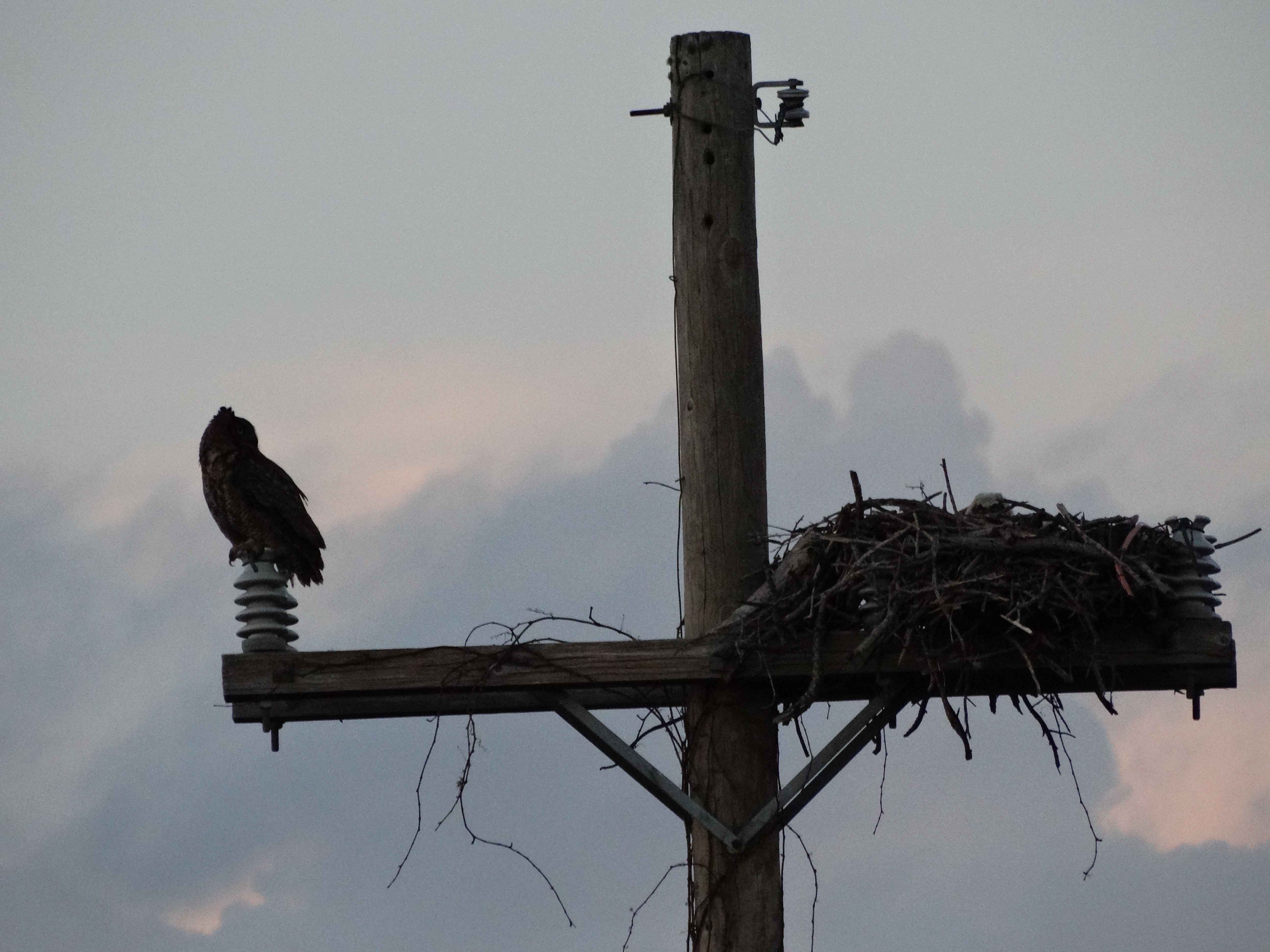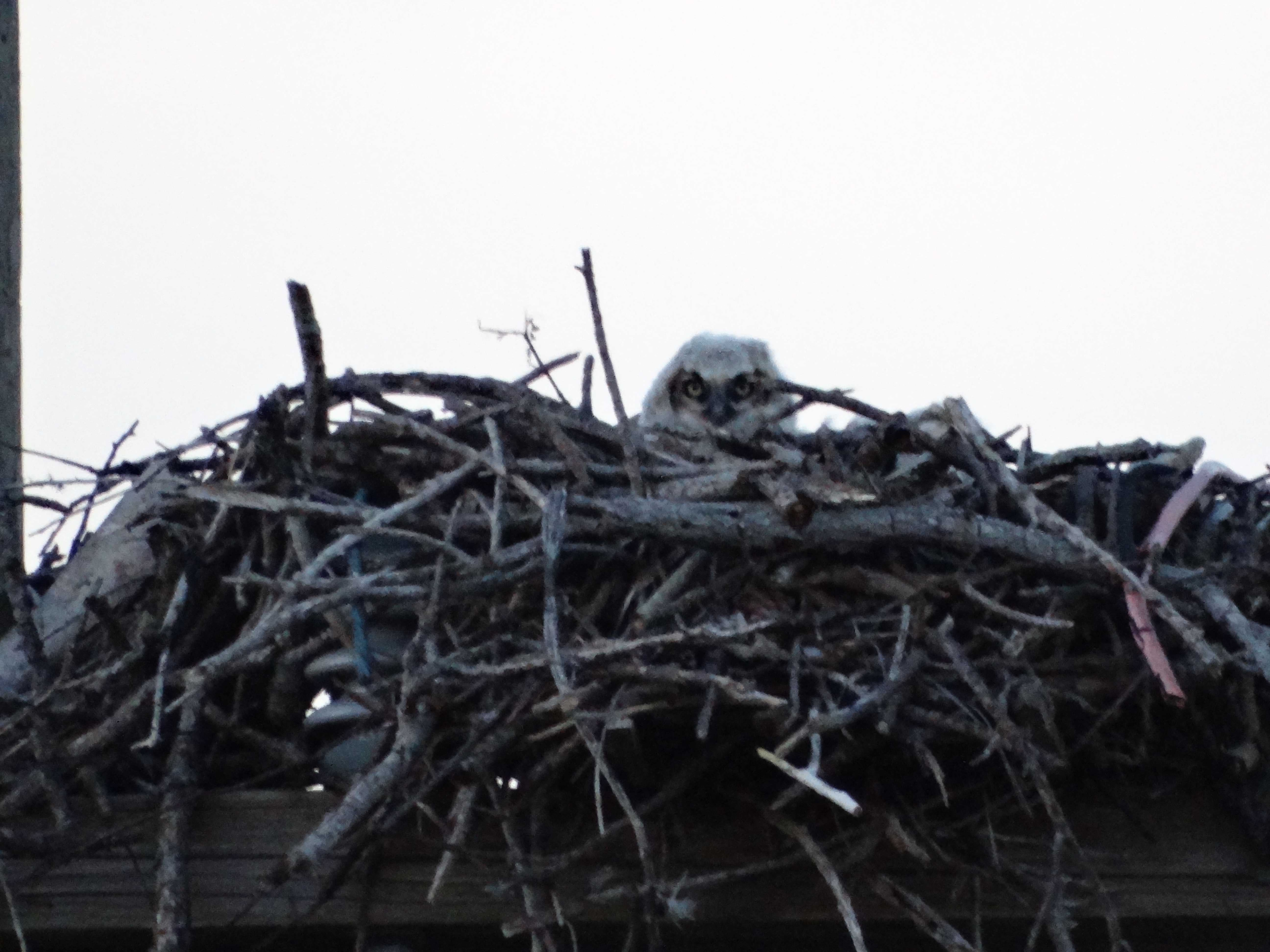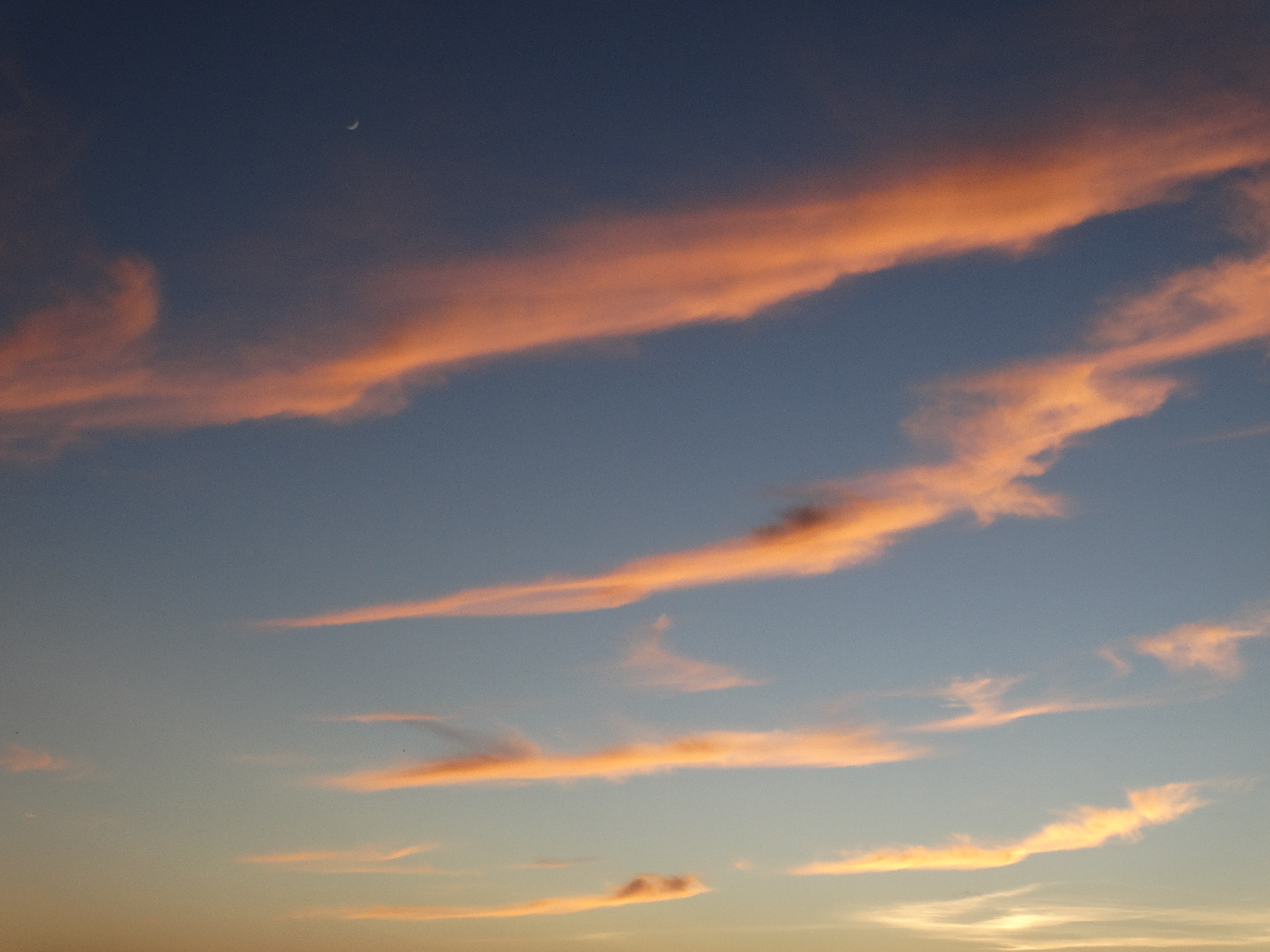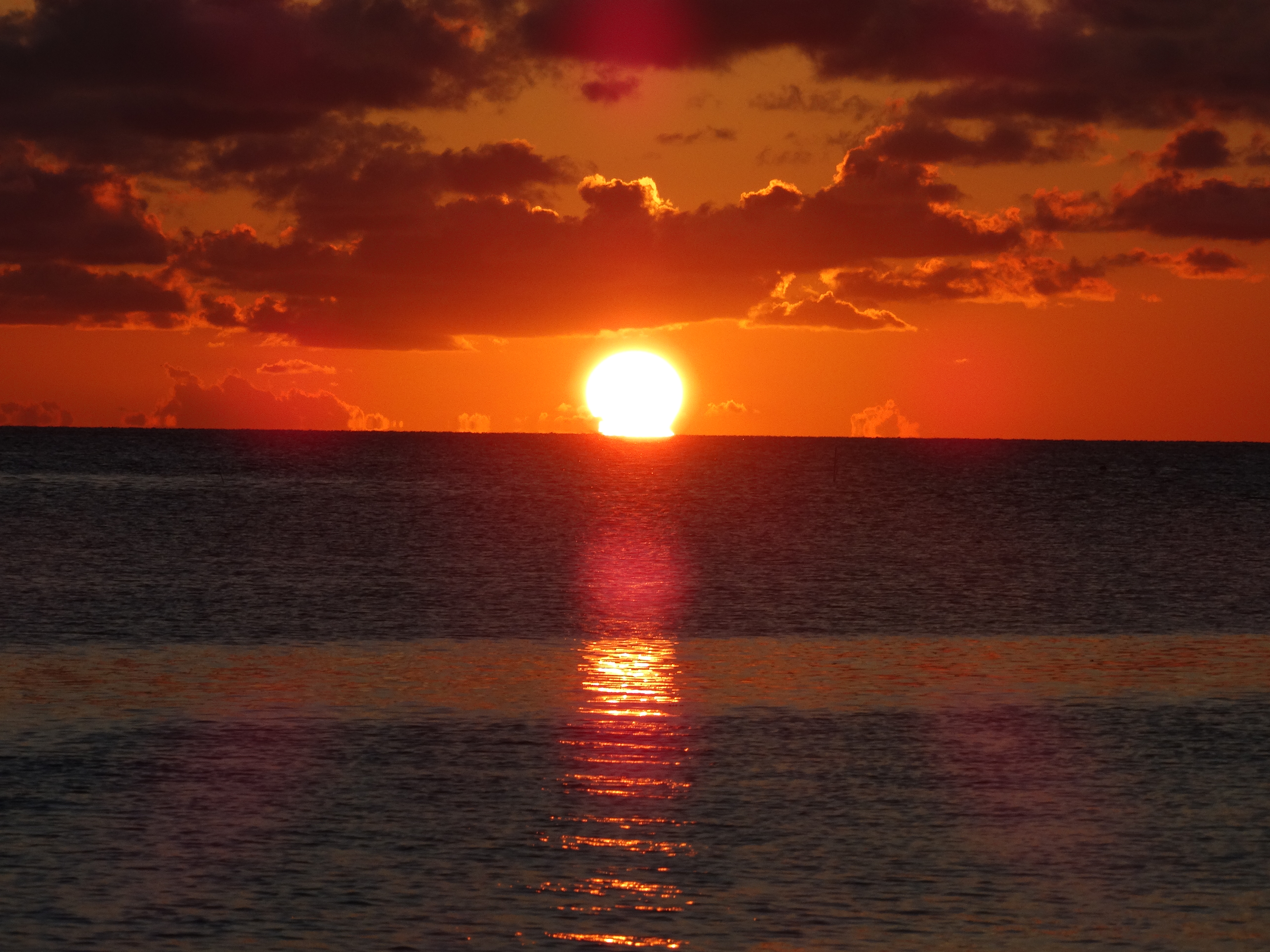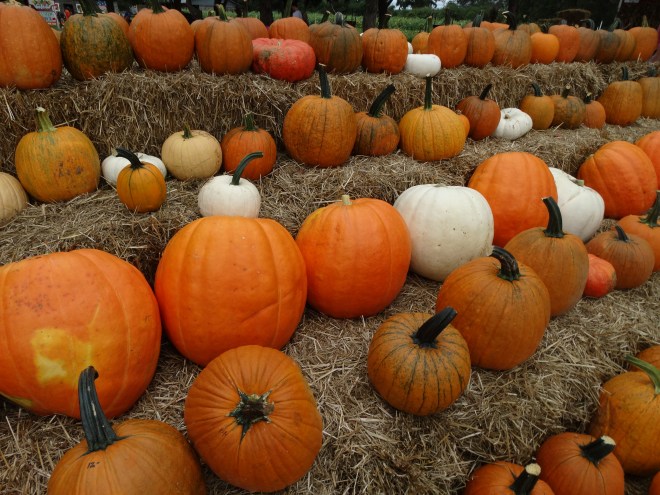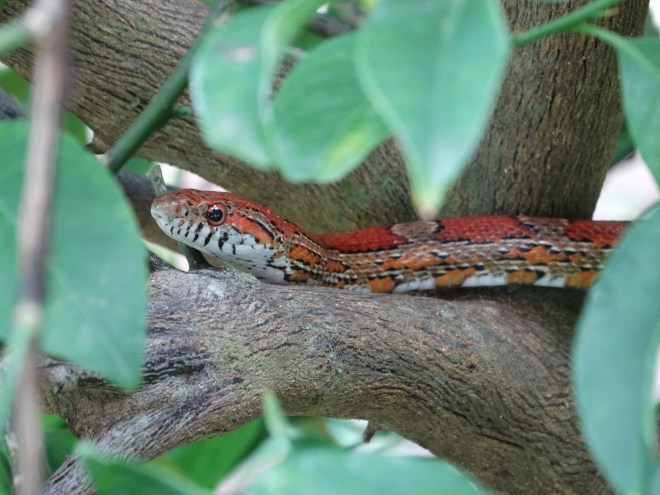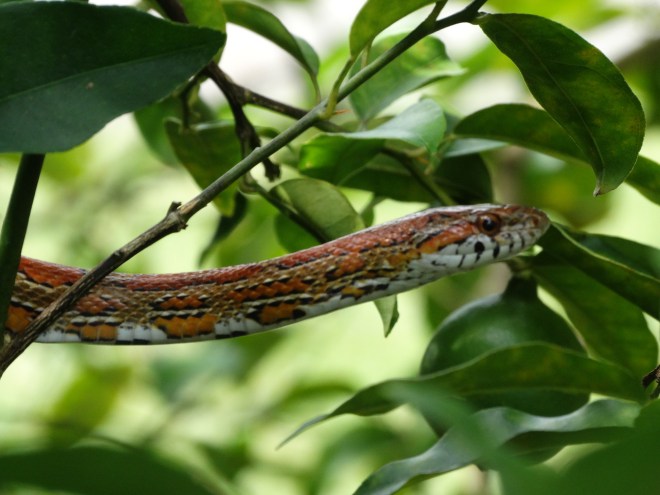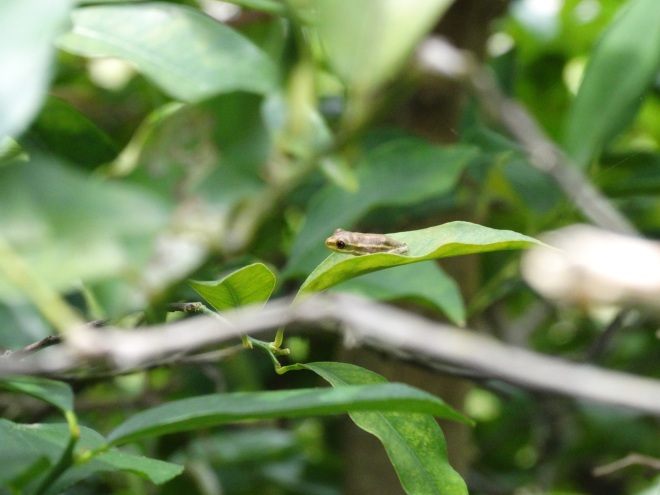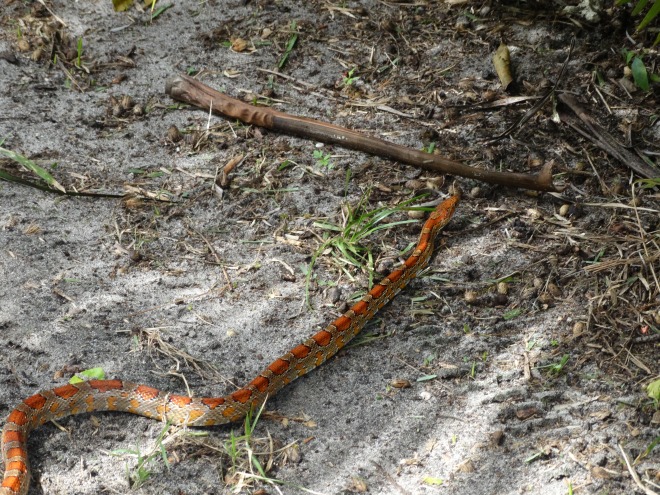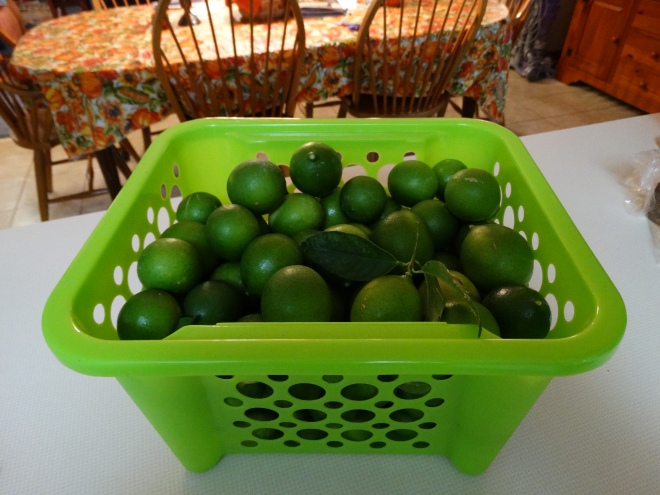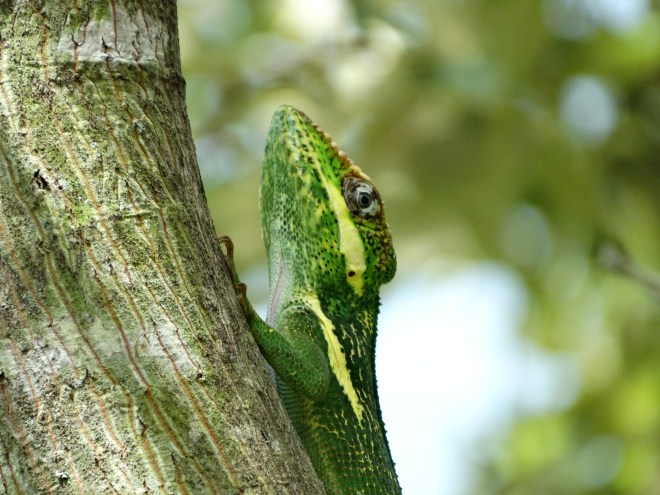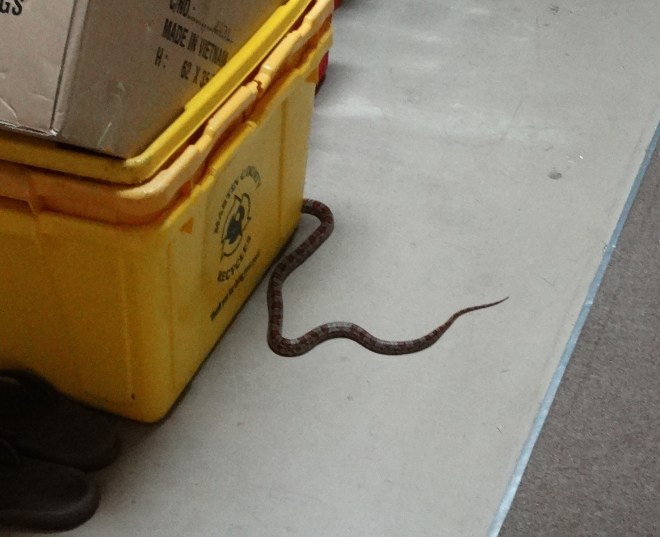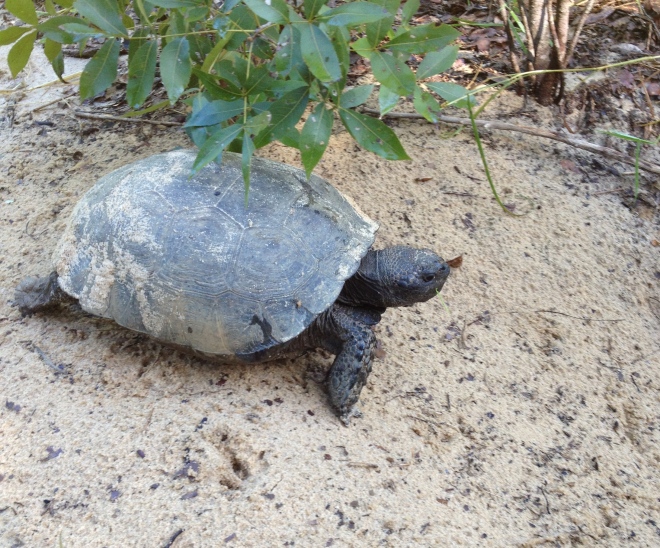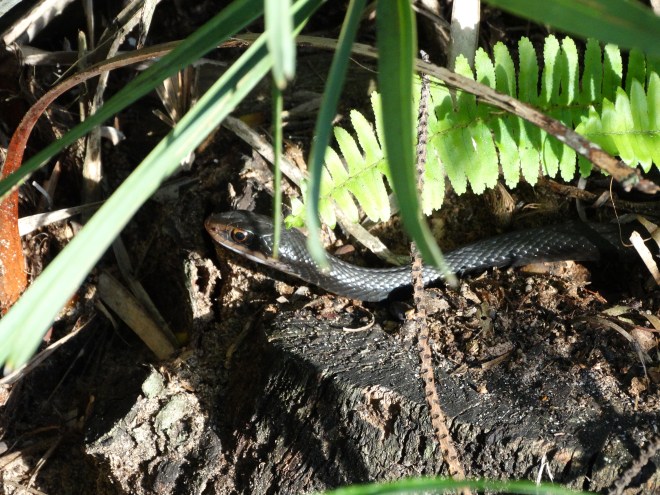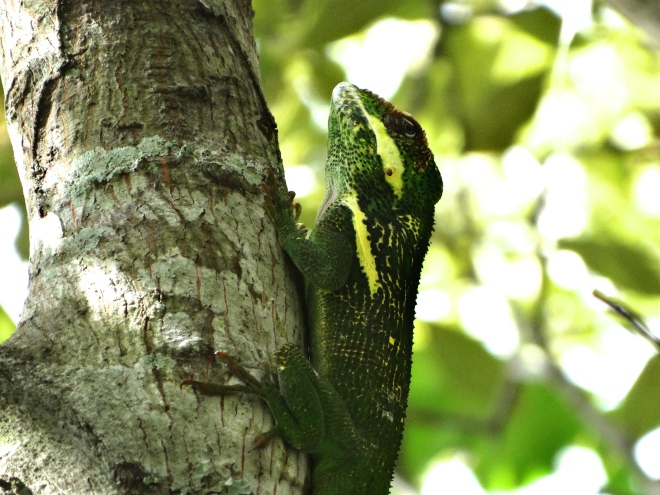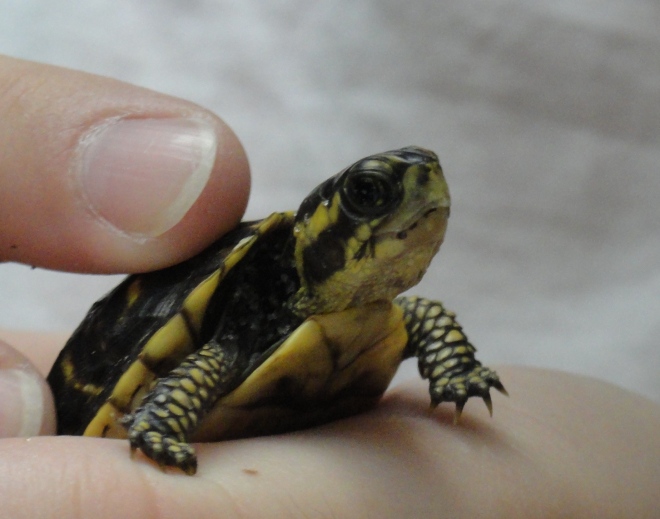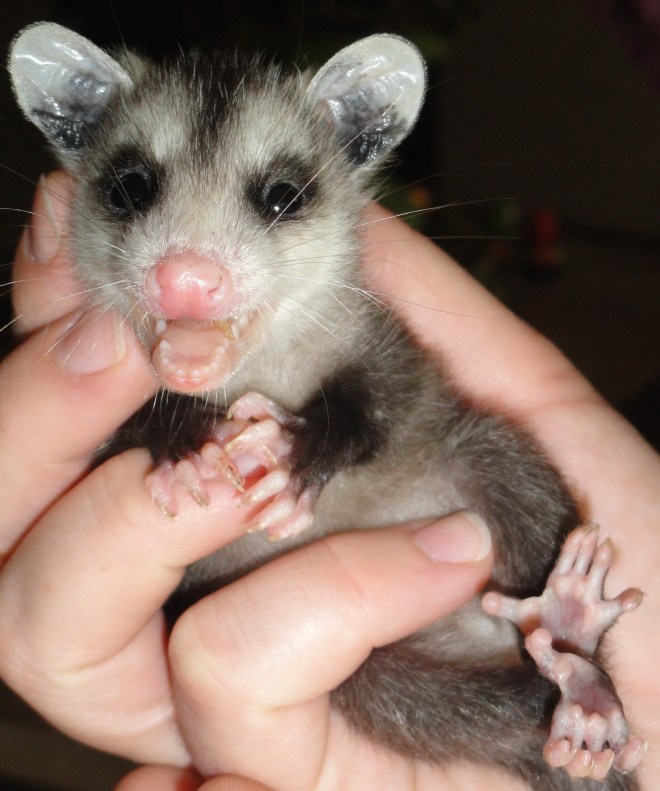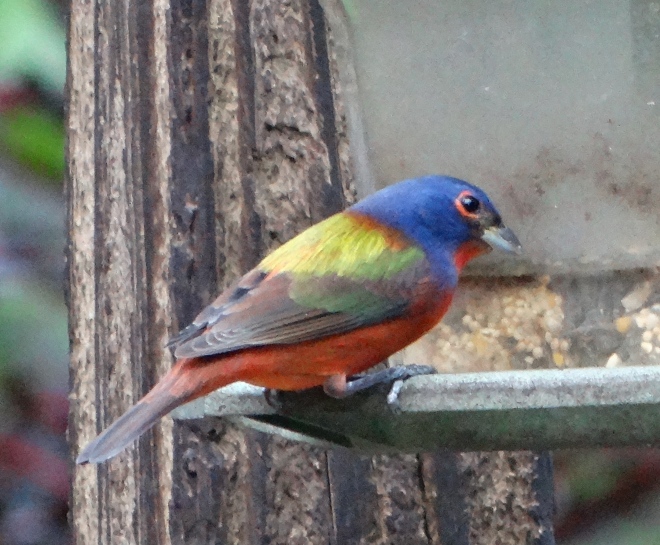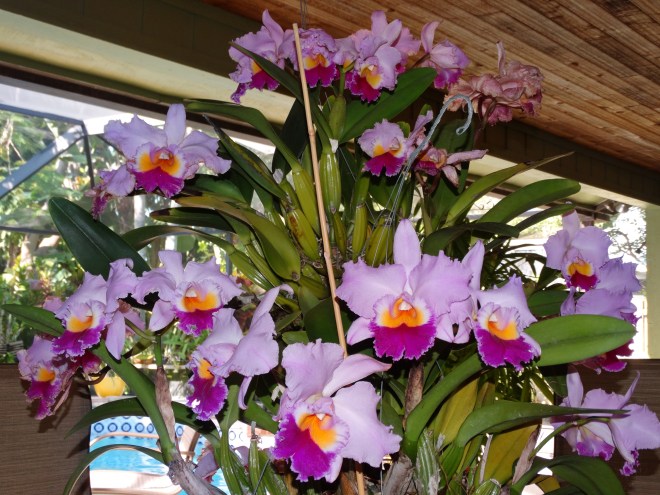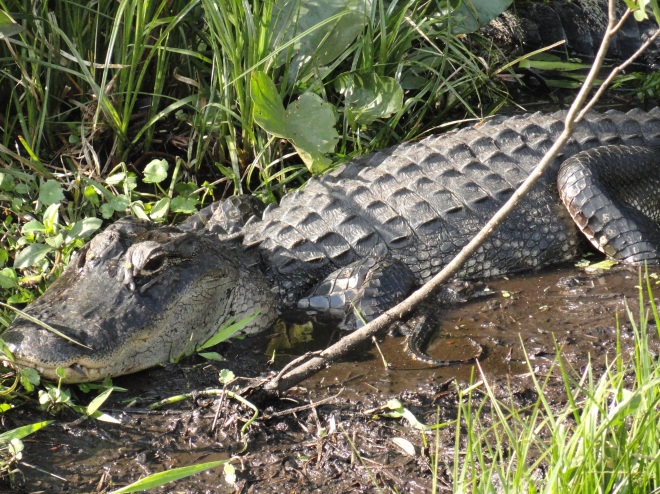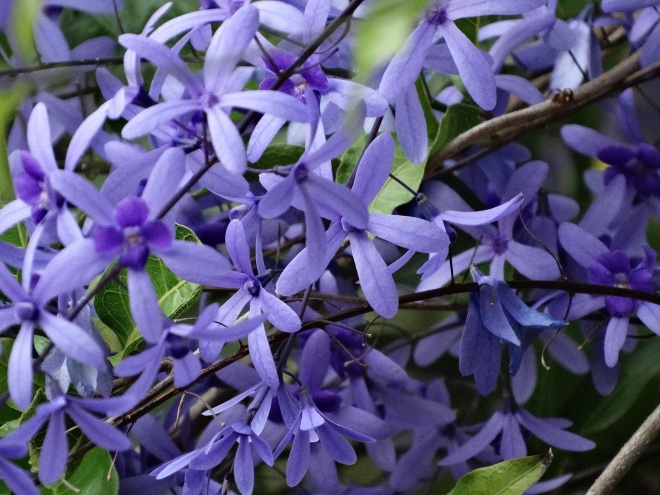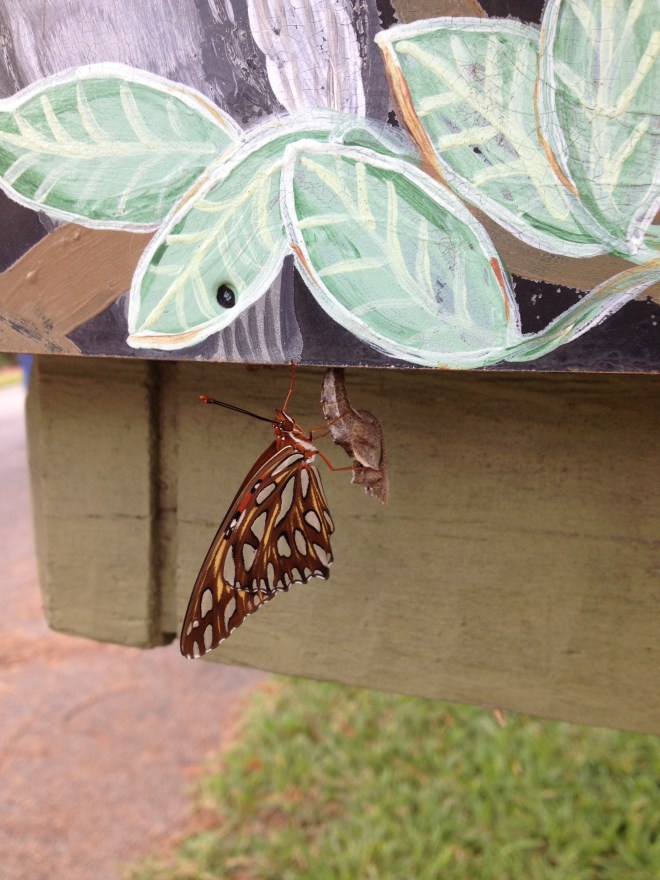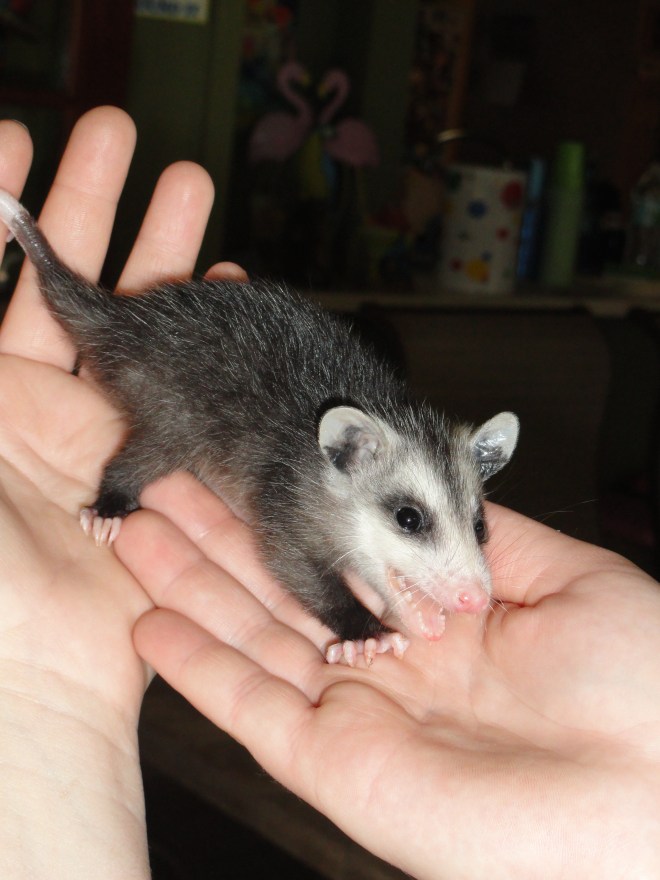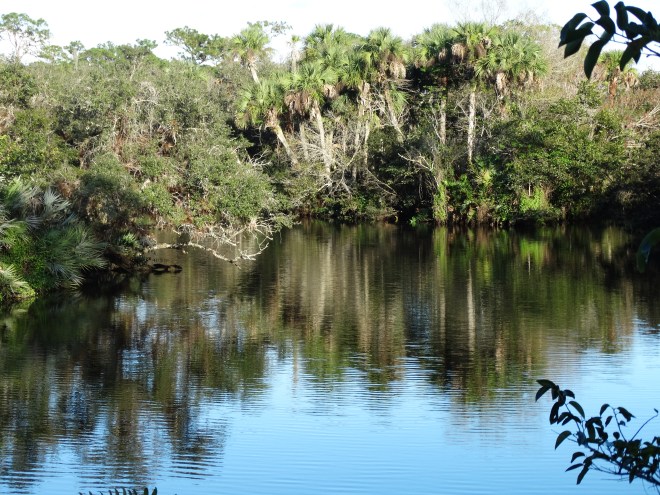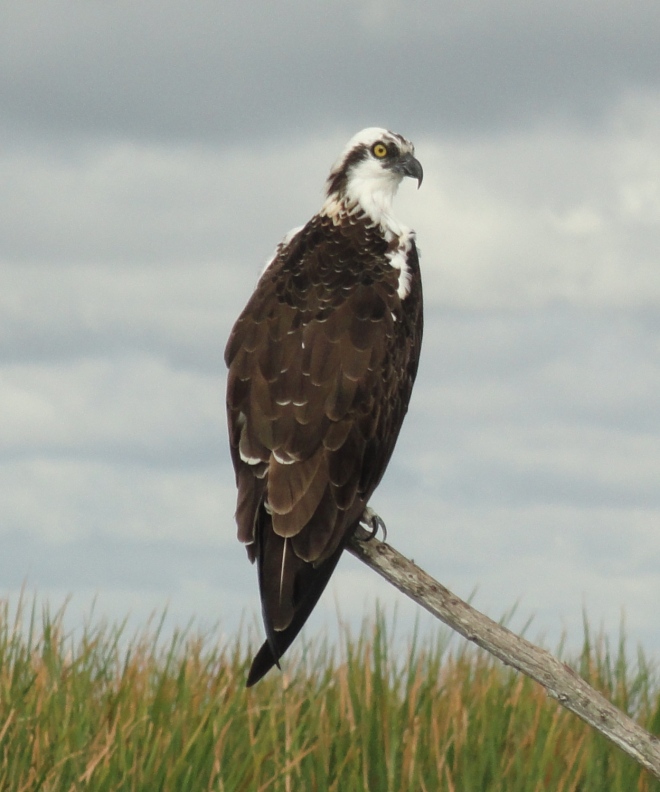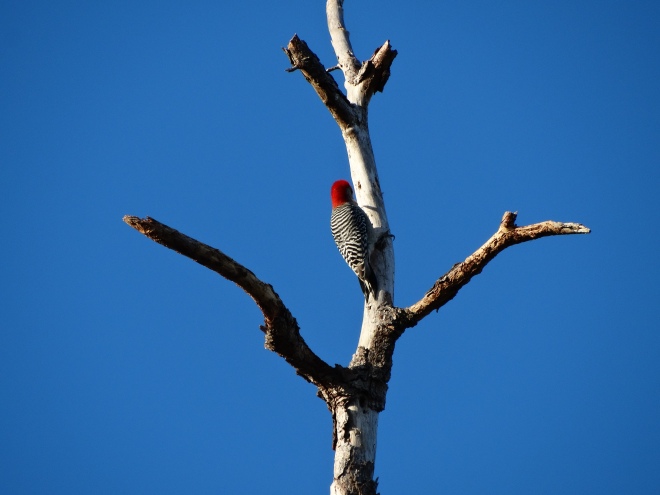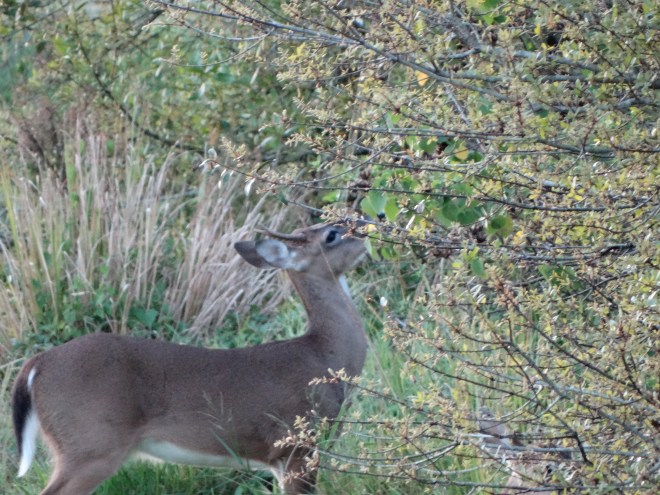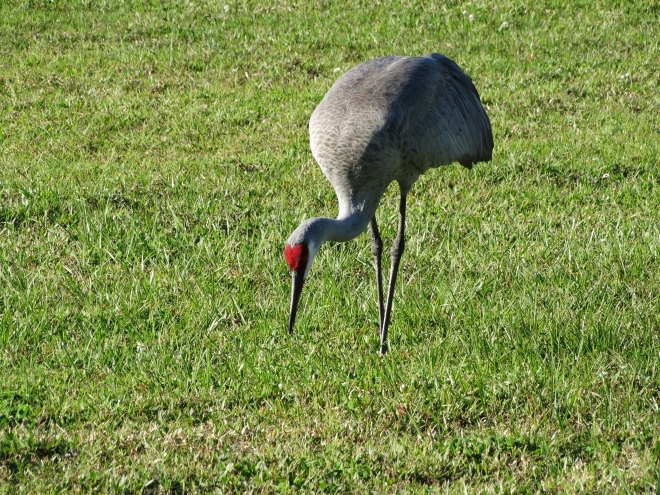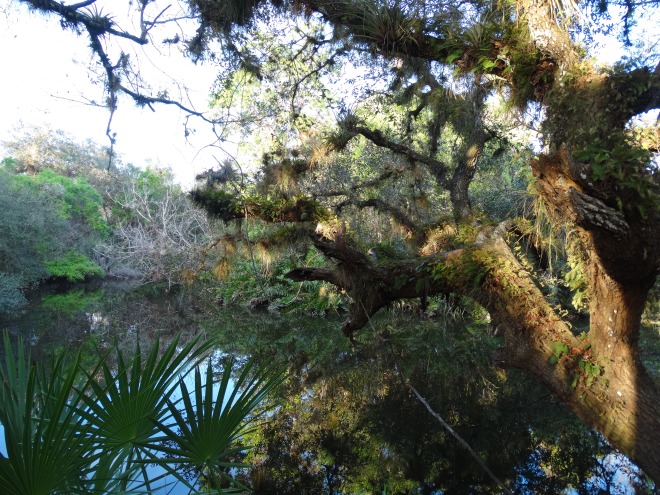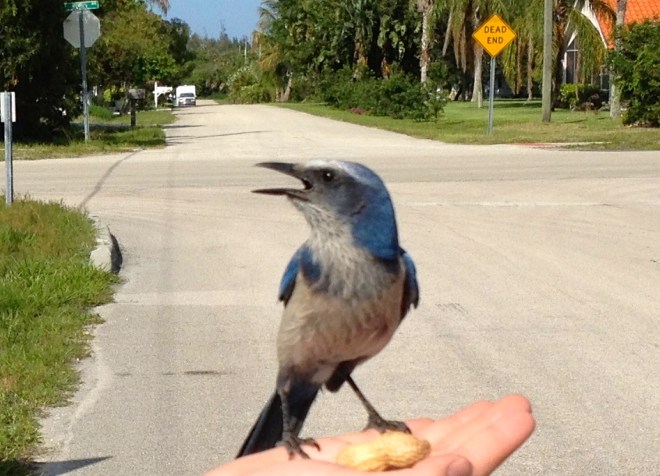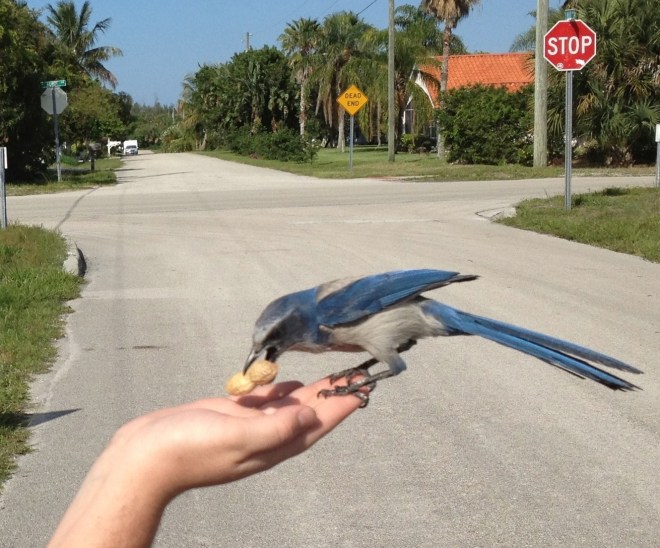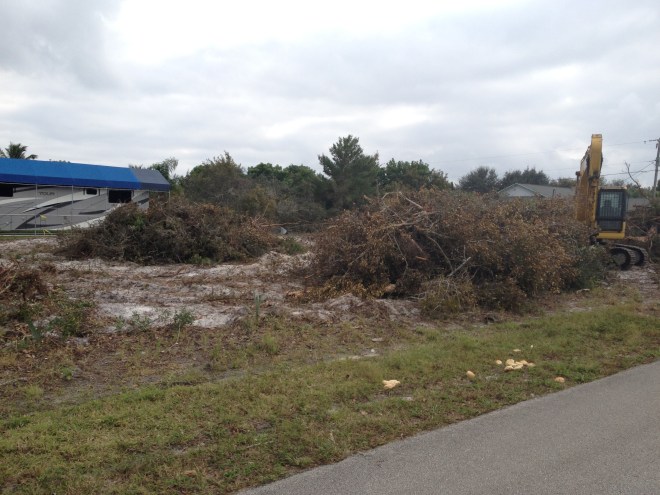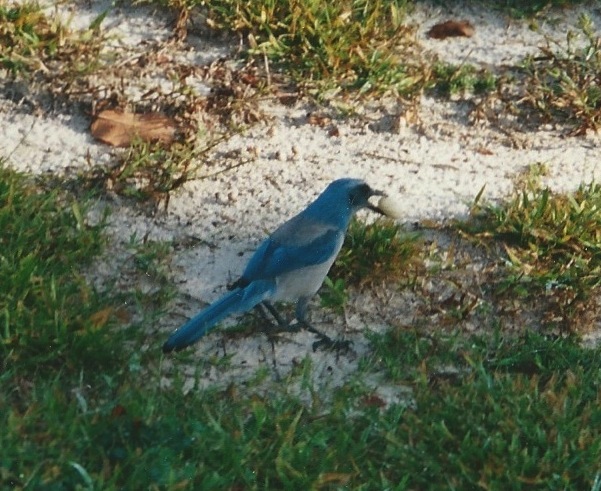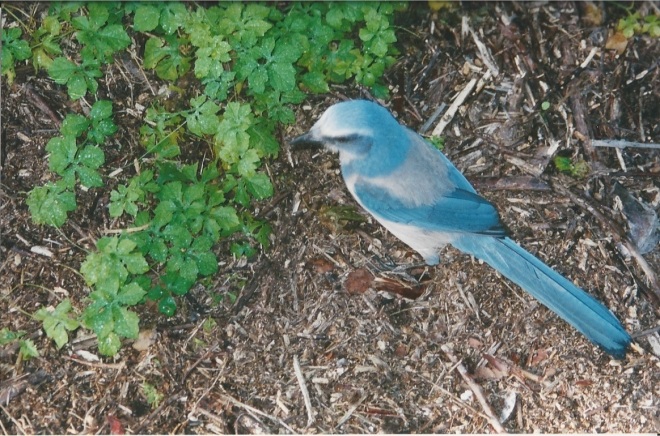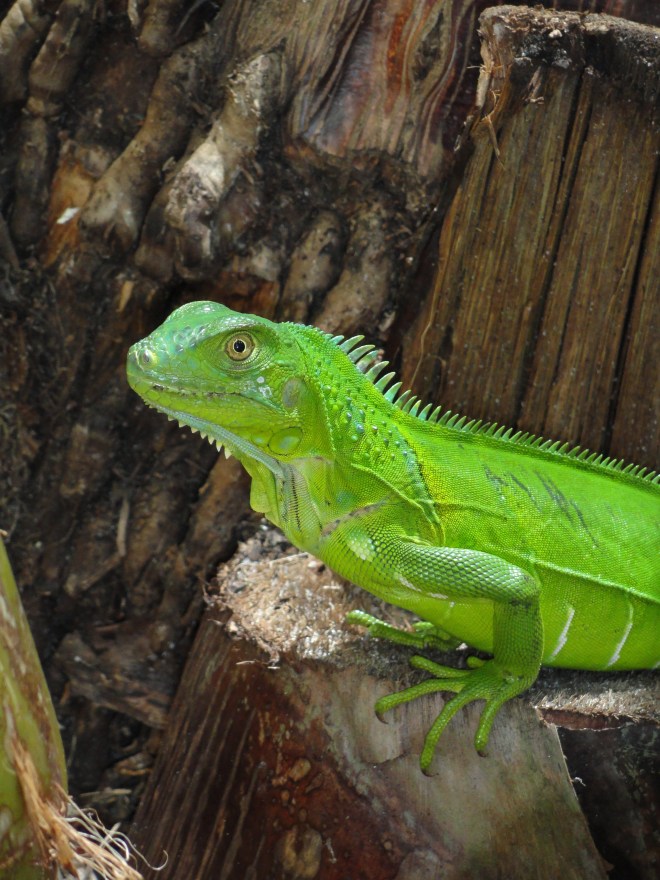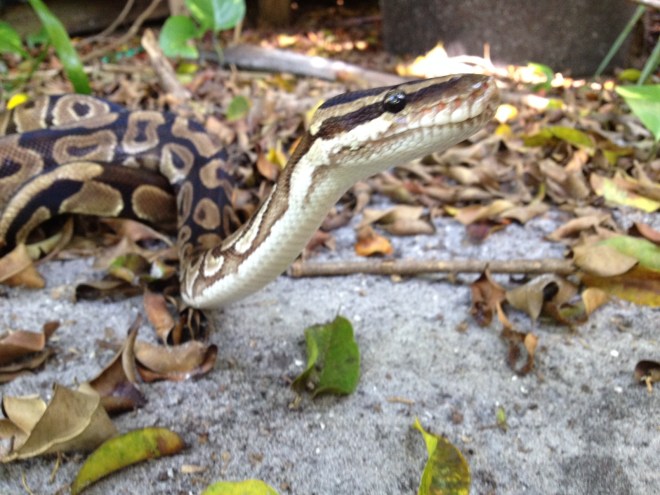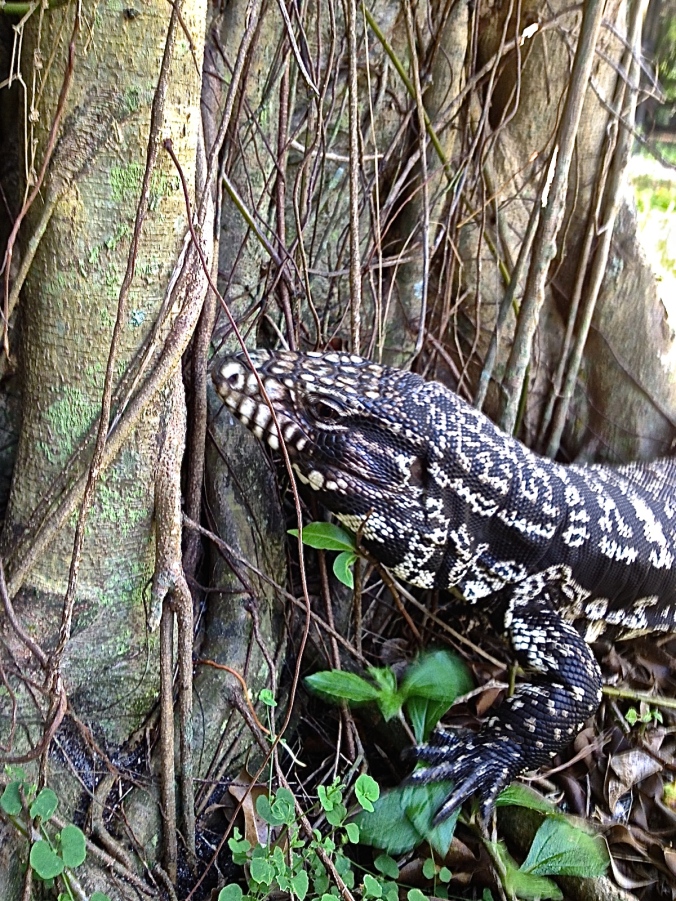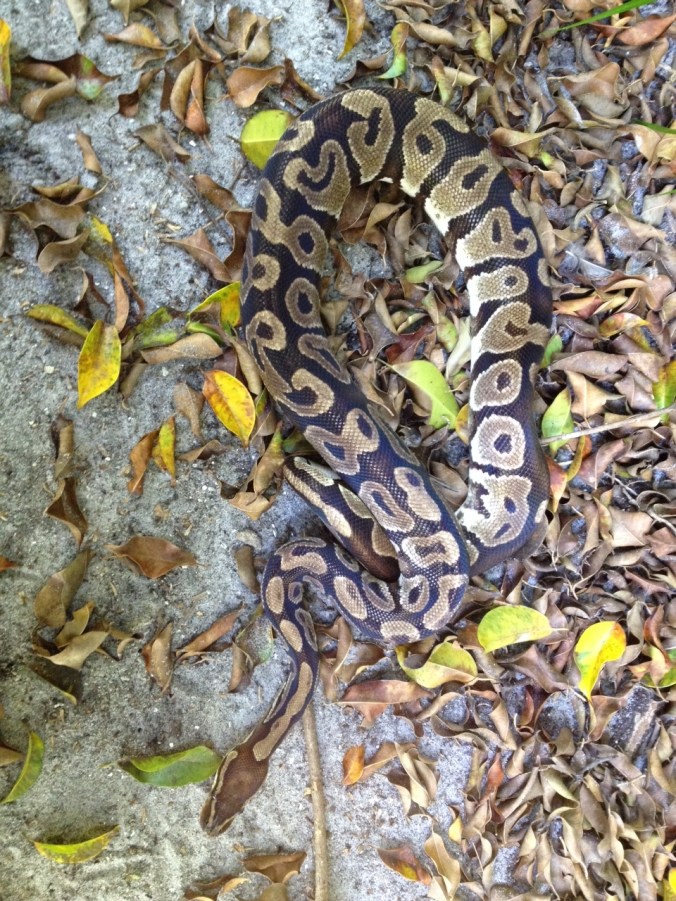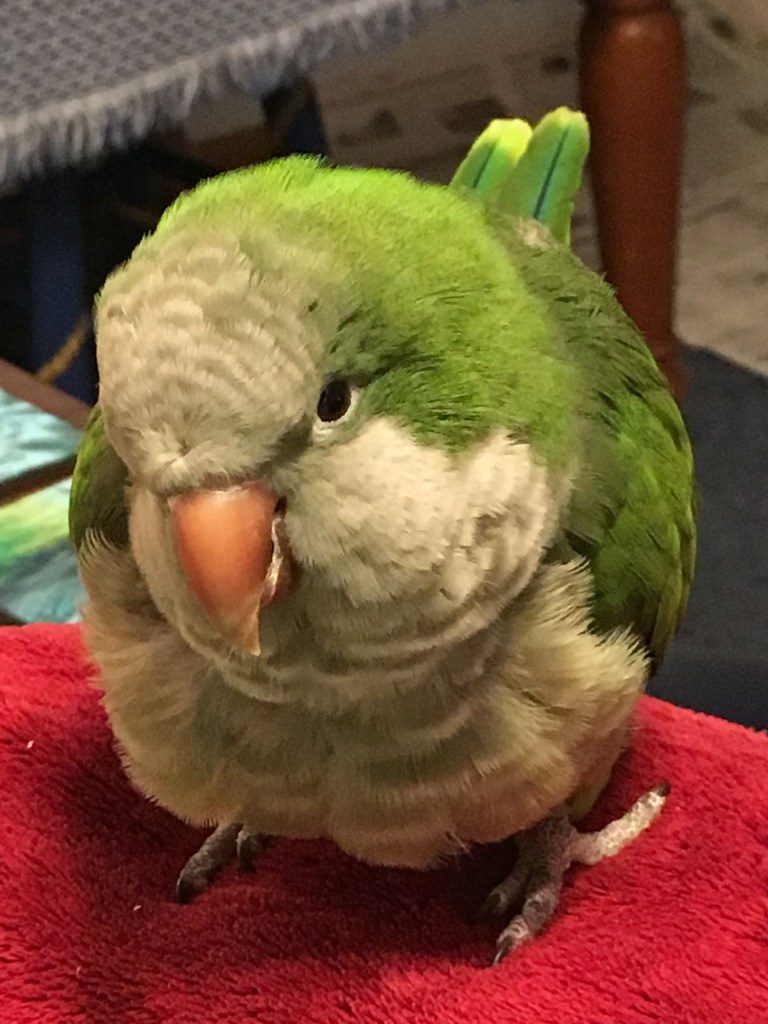
Two weeks ago, our beloved Quaker parrot Calypso flew over the Rainbow Bridge.
Our precious Calypso….aka Fuzzy, Satan, Jerkface…
He was the smartest, meanest, funniest, nastiest, most spiteful parrot I ever knew. And I adored him. Dearly.
It’s taken this long for me to talk about it. Or write about it. Without tears streaming down my face.
Nope. I’m still crying.
I am shattered. He has been a huge part of our lives for 22 years. We adopted him as a baby for my daughter when she was eleven. The two were inseparable. She weaned him and taught him so many things. I know he inspired her career as a zoologist and a lifelong love of birds.

His vocabulary was extensive, and he used words in context. At six weeks he asked, “What doin’?” and I would answer him. He said, “Hola” or “Hi” to greet us, “Bye-Bye” when we left, and blew us kisses and played “Peek-A-Boo” every day.
As the garage door opened, he’d chirp at our return.
He called me a “Fat Little Chicken.” When I told him to speak for himself, he’d say, “I’m a Cute Little Leprechaun!”
He yelled, “Let Me Out!” when I closed him in his cage, and “Night Night” at bedtime when I covered him for sleep.
He would switch from cuddly and loving to biting your face off in a nanosecond. But when you were sad, he would say, “Awww!” and reach for your cheek and wipe your tears. He would sell his soul for yellow squash or whipped cream. He loudly expressed his displeasure with any change to his routine. But he’d also purr like a kitten when wrapped in a blanket, letting you scratch the pin feathers on his neck.
He loved running through all the animal sounds:
“Turkeys say Gobble Gobble Gobble. Chickens say Buck Buck Buck BaBUCK! Ducks say Quack Quack Quack. Roosters say Cock-a-doodle Doooo! Puppy Dogs say Grrr Ruff Ruff. Kitty Cats say Me-owww!”
My mother taught him the songs “Mares Eat Oats,” “A Bushel and a Peck,” and “You are My Sunshine.” Mom’s been gone for twenty years, but every time he’d sing those songs I’d smile thinking of her.
He had his own style of This Little Piggy: “…this little piggy had BIRD SEED! But this little piggy had NONE. NONE!!! But THIS big fat green piggy cried WEE WEE WEE WEE WEE! All the way home!”
And he sang his version of the theme song from Cops—“Bad birds, bad birds, watcha gonna do?”
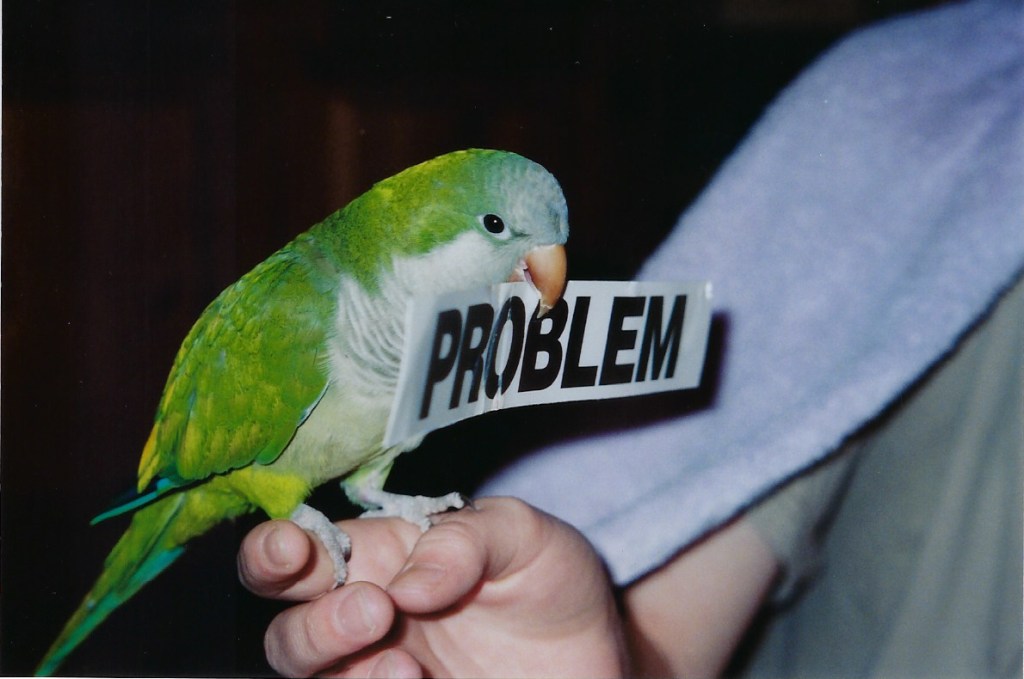
The past two years I’ve watched him slow down. He slept a lot during the day, and his feisty personality had mellowed. He survived a stroke five years ago, and his health (and diet!) had improved much since then. Seeing him age, I’ve known in my heart this day was coming. But I just cannot accept it now that it’s here.
I will miss him forever. I’ll never hear that wonderful voice of his again. There is an empty space where his cage once was, and looking there hurts me to my bones. I’m in a fog of pain, and I know this wound will take a long time to scab over.

They’ll be no more “Ooo, yum yum!” when I give him a treat.
They’ll be no more “Awwww” when he knows we are sad.
They’ll be no more “Thank you!”s when we give him a kiss.
They’ll be no more “Ow ow ow!” when I stub my toe.
They’ll be no more “Go go go!” when I’m watching football.
They’ll be no more “Ah Choo! God Bless You!” when I sneeze.
They’ll be no more “Scary!!” when the Halloween decorations go up.
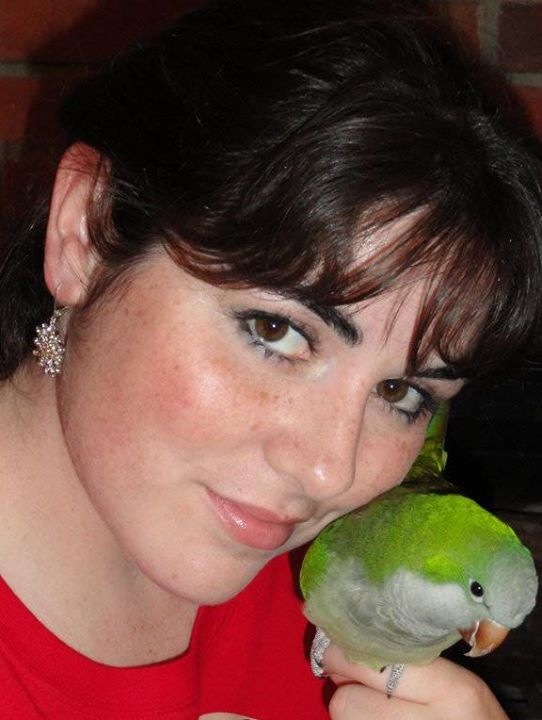
No more maniacal laughter when we’re happy.
No more yellow squash flung against the walls.
No more screeching when I put my shoes on, knowing I was leaving and he had to go in his cage.
No more alarm calls at tin foil and saran wrap.
No more griping when I move the furniture or dust the blinds.
No more squawks when I come home, reminding me to open his cage.
No more complaining that we’re keeping him up past his bedtime.
No more hysterics when he sees the ironing board.
No more smoochy kisses when he hears me get up in the morning.
Even with two other parrots in our flock, there is a deafening silence in the house. I don’t think I’ll ever get used to it.
Fly free, my cantankerous, ferocious, brilliant, beloved Calypso.
You’ve taken a chunk of my heart with you.
